Radeon X1950 XTX & X1900 XT 256MB
by Derek Wilsonon August 23, 2006 9:52 AM EST
- Posted in
- GPUs
74 Comments
|
74 Comments
IndexWhat is GDDR4?The TestA Matter of Memory: Revisiting the Mid-RangeA Faster, Cheaper High-EndBattlefield 2 PerformanceBlack & White 2 PerformanceThe Elder Scrolls IV: Oblivion PerformanceF.E.A.R. PerformanceHalf-Life 2: Episode One PerformanceQuake 4 PerformanceSplinter Cell: Chaos Theory PerformancePower to the PeopleFinal Words
ATI has this nasty habit of introducing way too many GPUs into its lineup, and today is no letdown to tradition as ATI is introducing a total of five new video cards.
We’ll start at the bottom with the Radeon X1300 XT, a new $89 part from ATI. The X1300 XT is effectively a rebadged X1600 Pro, and thus should offer a significant performance boost over the rest of the X1300 family.
Since the X1300 XT is the same thing as an X1600 Pro, the X1600 family gets a new member with the introduction of the X1650 Pro. The X1650 Pro is identical to the X1600 XT except for a 10MHz increase in core clock and memory clock frequency. Yes, an entirely new product was created out of a 10MHz bump in GPU/memory clocks. The X1650 Pro will be priced at $99.
ATI’s Radeon X1650 Pro
Last week we took a look at currently available mid-range GPU solutions in the $200 — $300 price range and found that for around $340 you could pick up a 512MB X1900 XT and generally get some very solid performance. Today ATI is introducing a 256MB version of the X1900 XT at the suggested retail price of $279, which has the potential to give ATI a firm grasp on the performance mainstream GPU market. The X1900 XT 256MB is no different than its 512MB brother other than memory size, so pipes and clocks are the same. If you’re wondering why the X1900 XT (512MB) noticed such a sharp decline in price over the past couple of weeks, the impending release of the cheaper 256MB version is your answer.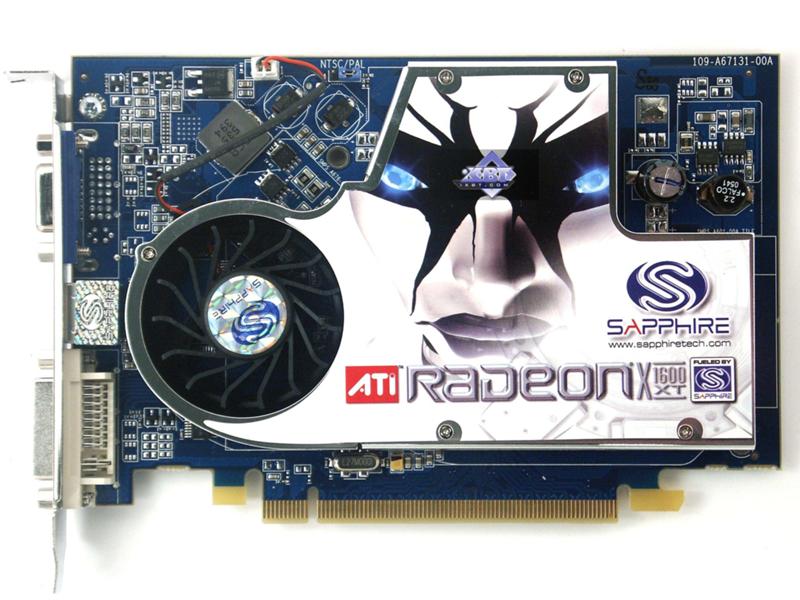
At the high end we’ve got the final two cards that round out today’s launch: ATI’s Radeon X1950 XTX and X1950 CrossFire. The X1950 XTX is identical to the X1900 XTX except that it uses faster GDDR4 memory, running at 1GHz compared to 775MHz on the X1900 XTX. With more memory bandwidth, the X1950 XTX could outperform its predecessor, but performance isn’t what we’re mostly excited about with this card — it’s the price. ATI is hoping to sell the X1950 XTX for $449, a drop in price compared to the introductory price of the X1900 XTX, which is a trend we haven’t seen too often among GPU makers.
ATI’s Radeon X1950 XTX
To make things even better, the CrossFire version, which has identical clocks, is also priced at $449; in other words, there’s no reason not to get the CrossFire version. ATI confirmed to us that you can run a pair of X1950 CrossFire cards in CrossFire mode, further reinforcing the fact that there’s no reason to even buy the regular card. You get the same performance, same features and better flexibility with the CrossFire card so why not?
You get the same performance, same features and better flexibility with the CrossFire card so why not?
ATI’s Radeon X1950 CrossFire
| NVIDIA Graphics Card Specifications | ||||||||
|
Vert Pipes |
Pixel Pipes |
Raster Pipes |
Core Clock |
Mem Clock |
Mem Size (MB) |
Mem Bus (bits) |
Price |
|
| GeForce 7950 GX2 |
8×2 |
24×2 |
16×2 |
500×2 |
600×2 |
512×2 |
256×2 |
$600 |
| GeForce 7900 GTX |
8 |
24 |
16 |
650 |
800 |
512 |
256 |
$450 |
| GeForce 7900 GT |
8 |
24 |
16 |
450 |
660 |
256 |
256 |
$280 |
| GeForce 7600 GT |
5 |
12 |
8 |
560 |
700 |
256 |
128 |
$160 |
| GeForce 7600 GS |
5 |
12 |
8 |
400 |
400 |
256 |
128 |
$120 |
| GeForce 7300 GT |
4 |
8 |
2 |
350 |
667 |
128 |
128 |
$100 |
| GeForce 7300 GS |
3 |
4 |
2 |
550 |
400 |
128 |
64 |
$65 |
| ATI Graphics Card Specifications | ||||||||
|
Vert Pipes |
Pixel Pipes |
Raster Pipes |
Core Clock |
Mem Clock |
Mem Size (MB) |
Mem Bus (bits) |
Price |
|
| Radeon X1950 XTX |
8 |
48 |
16 |
650 |
1000 |
512 |
256 |
$450 |
| Radeon X1900 XTX |
8 |
48 |
16 |
650 |
775 |
512 |
256 |
$375 |
| Radeon X1900 XT |
8 |
48 |
16 |
625 |
725 |
256/512 |
256 |
$280/$350 |
| Radeon X1900 GT |
8 |
36 |
12 |
525 |
600 |
256 |
256 |
$230 |
| Radeon X1650 Pro |
5 |
12 |
4 |
600 |
700 |
256 |
128 |
$99 |
| Radeon X1600 XT |
5 |
12 |
4 |
590 |
690 |
256 |
128 |
$150 |
| Radeon X1600 Pro |
5 |
12 |
4 |
500 |
400 |
256 |
128 |
$100 |
| Radeon X1300 XT |
5 |
12 |
4 |
500 |
400 |
256 |
128 |
$89 |
| Radeon X1300 Pro |
2 |
4 |
4 |
450 |
250 |
256 |
128 |
$79 |
Today we’re able to bring you a look at performance of the mid range and high end solutions, the X1950 cards and 256MB X1900 XT.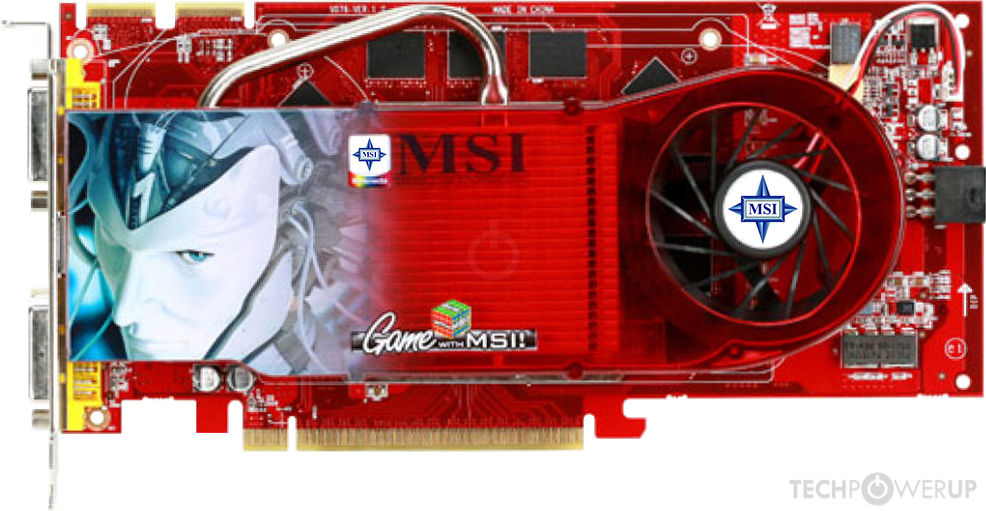 We’re still waiting for ATI to send us our X1300 XT and X1650 Pro samples, and we will follow up in the coming weeks with a look at the performance of those offerings as well. Note that although ATI is lifting the veil on its five new products today, you won’t actually be able to buy any of them until September 4th (on the high end) with no real availability until the 14th. Given the pricing that ATI is promising however, these cards are worth waiting for.
We’re still waiting for ATI to send us our X1300 XT and X1650 Pro samples, and we will follow up in the coming weeks with a look at the performance of those offerings as well. Note that although ATI is lifting the veil on its five new products today, you won’t actually be able to buy any of them until September 4th (on the high end) with no real availability until the 14th. Given the pricing that ATI is promising however, these cards are worth waiting for.
With five new cards being introduced, ATI is hoping to slowly phase out all of its other offerings to simplify its product lineup. Unfortunately, it will take some time for all inventory to dry up, but when it does ATI hopes to have the following cards in its lineup:
| Class | Card |
Price |
| Enthusiast | ATI Radeon X1950 XTX |
$449 |
| ATI Radeon X1900 XT 256MB |
$279 |
|
| Performance | ATI Radeon X1900 GT |
$249 |
| Mainstream | ATI Radeno X1650 Pro |
$99 |
| ATI Radeon X1300 XT |
$89 |
|
| Value | ATI Radeon X1300 Pro |
$79 |
| ATI Radeon X1300 256 |
$59 |
|
| ATI Radeon X1300 64-bit |
$49 |
The performance difference between the X1900 XTX and XT was small enough that it didn’t make sense to have two different products, which is why ATI left the X1950 XTX as the only high end GPU on its roster.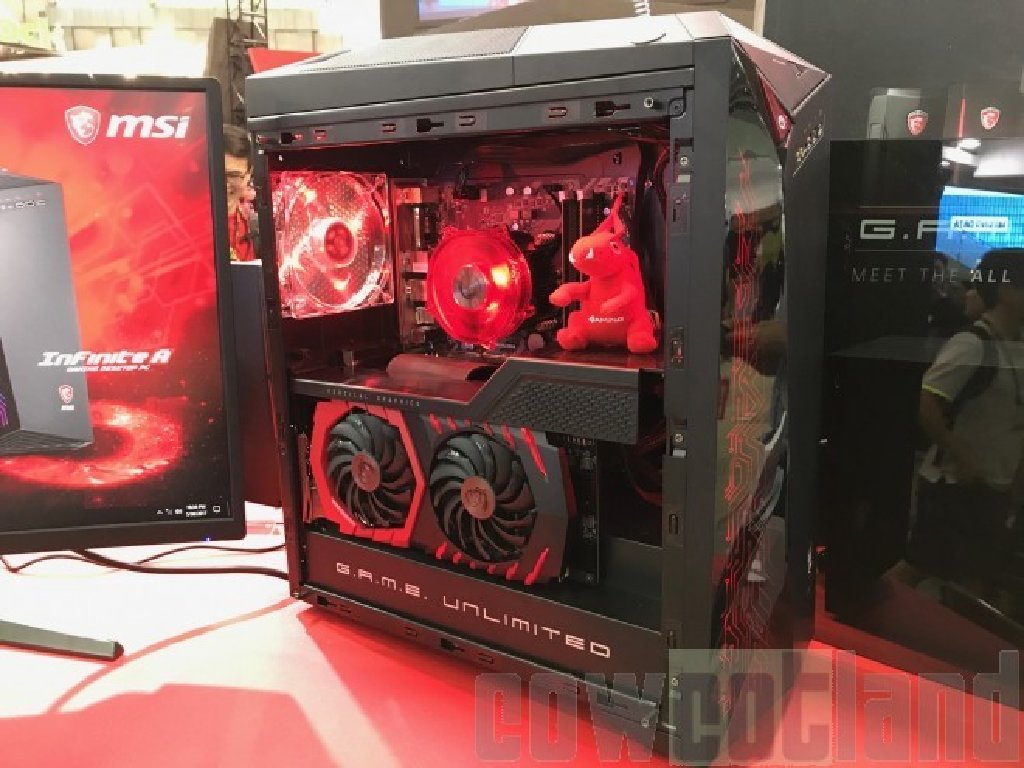
As we don’t have availability right now, we can’t confirm real street prices, but we did speak with a few companies who manufacture ATI cards. HIS has stated that they should be able to meet ATI’s pricing on all of these parts, which is promising. We also heard from PowerColor on pricing, and it looks like they will be able to meet the MSRP price on the X1950 XTX. With the X1900 XT and X1900 XT 256MB, PowerColor will be listing them for $400 and $300 respectively. Depending on how the rest of the manufacturers stack up, we could see some good prices next month or be sorely disappointed; at this point it’s best to be cautious with a launch so far in advance of availability.
What is GDDR4?
IndexWhat is GDDR4?The TestA Matter of Memory: Revisiting the Mid-RangeA Faster, Cheaper High-EndBattlefield 2 PerformanceBlack & White 2 PerformanceThe Elder Scrolls IV: Oblivion PerformanceF.E.A.R. PerformanceHalf-Life 2: Episode One PerformanceQuake 4 PerformanceSplinter Cell: Chaos Theory PerformancePower to the PeopleFinal Words
Tweet
PRINT THIS ARTICLE
ATI Radeon X1950XTX | bit-tech.
 net
net
Written by
Tim Smalley
August 23, 2006 | 16:37
Tags: #benchmark #evaluation #gddr4 #noise #performance #playable #plus #r580 #radeon #review #x1950 #xtx
Companies: #arctic #ati
1 — ATI Radeon X1950XTX2 — New Heatsink Design3 — Under the hood4 — The move to GDDR45 — Test Setup6 — CRT — Elder Scrolls IV: Oblivion7 — CRT — Half-Life 2: Episode One8 — CRT — G.R.A.W.9 — CRT — Quake 410 — CRT — Battlefield 211 — CRT — NFS: Most Wanted12 — 24″ wide — Elder Scrolls IV: Oblivion13 — 24″ wide — Half-Life 2: Episode One14 — 24″ wide — G.R.A.W.15 — 24″ wide — Quake 416 — 24″ wide — Battlefield 217 — 24″ wide — NFS: Most Wanted18 — Final Thoughts
Core Clock: 650MHz
Memory Clock: 2000MHz (effective)
A lot has happened at NVIDIA since ATI launched its Radeon X1900-series at the end of January.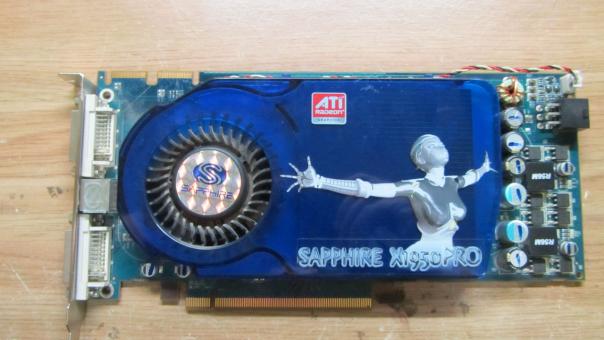 The boys in green unveiled the GeForce 7900-series at CeBIT and then unveiled GeForce 7950 GX2 — dubbed SLI on a stick by some — at Computex. We’ve also played with Quad SLI, twice, since then too. While all of this has been going on, ATI has been pretty quiet on the GPU front.
The boys in green unveiled the GeForce 7900-series at CeBIT and then unveiled GeForce 7950 GX2 — dubbed SLI on a stick by some — at Computex. We’ve also played with Quad SLI, twice, since then too. While all of this has been going on, ATI has been pretty quiet on the GPU front.
Company executives at ATI have been pre-occupied with other things since the Radeon X1900-series launch. However, the strength and depth of the Radeon X1900XTX has kept the company right up there with NVIDIA. GeForce 7900 GTX wasn’t fast enough to out-gun the X1900XTX, without even taking the more advanced feature set into account. While GeForce 7950 GX2 was considerably faster in many situations, it didn’t break any boundaries on the image quality front.
Today, ATI is announcing the Radeon X1950-series — the first video cards to introduce GDDR4 at the consumer level. The Radeon X1950-series is based on the same R580 graphics processing unit, with some minor tweaks made in a new core stepping.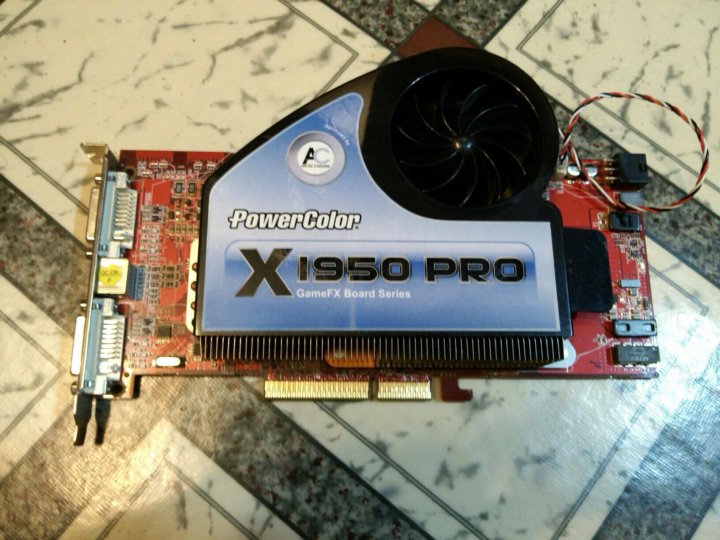 It is still fabricated on TSMC’s 90-nanometre low-k process node and the internal configuration is virtually unchanged. This means that there are still the same fourty-eight pixel shader processors, sixteen texture units, eight vertex shaders and sixteen pixel output engines.
It is still fabricated on TSMC’s 90-nanometre low-k process node and the internal configuration is virtually unchanged. This means that there are still the same fourty-eight pixel shader processors, sixteen texture units, eight vertex shaders and sixteen pixel output engines.
click to enlarge
Even though the GPU has remained largely the same, ATI has made the move to GDDR4 memory on the Radeon X1950XTX. Under the mass of red plastic and copper, there are eight 64MB Samsung BC09 GDDR4 modules, making up a 512MB frame buffer. These DRAMs are rated to 1111MHz DDR (2222MHz effective), and are running at a dizzy 2000MHz effective. Because the memory is clocked lower than its rated speeds, there should be some headroom for even higher memory clocks than the clocks ATI has set. It will be interesting to see if any of ATI’s partners choose to overclock the Radeon X1950XTX — I guess that time will tell on that front.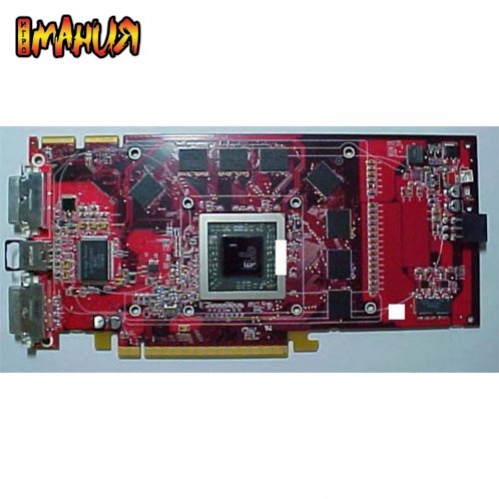
click to enlarge
Some of ATI’s partners have been advertising HD-compliant video cards for some time now, even without full support for technologies like High-Bandwidth Digital Content Protection (HDCP). In our book, part of being HD-compliant includes supporting HDCP — we just can’t see the video industry selling HD DVD or Blu Ray discs without it. HD media discs without HDCP would be on the same level as DVDs without macrovision copy protection: i.e. highly unlikely.
Thankfully, the Radeon X1950-series has joined NVIDIA’s GeForce 7950 GX2 with the required crypto-ROMs for HDCP compliancy across its two DVI ports. Much like the Radeon X1900XTX, both of the DVI ports are dual-link enabled, meaning that it is possible to run a pair of Dell 3007WFP monitors off one of these if you so desire.
click to enlarge
The card itself is incredibly red and the dual-slot cooling solution dominates the design — we will come to this in more detail shortly. With the redesigned cooler, the fan header has moved to the other end of the card, near to the power regulation circuitry. There are some slight changes in PCB layout, mainly relating to the different voltage requirements for GDDR4 memory.
With the redesigned cooler, the fan header has moved to the other end of the card, near to the power regulation circuitry. There are some slight changes in PCB layout, mainly relating to the different voltage requirements for GDDR4 memory.
However, none of these changes are critical when it comes to mounting aftermarket cooling solutions. There is no change to the mounting mechanism and mounting hole spacing, so if you’ve already got a Radeon X1800 or Radeon X1900-series card, you’ll be able to install the same watercooling equipment if you’re into the wet stuff.
1 — ATI Radeon X1950XTX2 — New Heatsink Design3 — Under the hood4 — The move to GDDR45 — Test Setup6 — CRT — Elder Scrolls IV: Oblivion7 — CRT — Half-Life 2: Episode One8 — CRT — G.R.A.W.9 — CRT — Quake 410 — CRT — Battlefield 211 — CRT — NFS: Most Wanted12 — 24″ wide — Elder Scrolls IV: Oblivion13 — 24″ wide — Half-Life 2: Episode One14 — 24″ wide — G.R.A.W.15 — 24″ wide — Quake 416 — 24″ wide — Battlefield 217 — 24″ wide — NFS: Most Wanted18 — Final Thoughts
ATI Radeon X1950 XTX (512MB) review: ATI Radeon X1950 XTX (512MB)
As is often the case at the end of a 3D chip generation, the Radeon X1950 XTX does not introduce many new features. The biggest change it brings to the Radeon X1000 family is GDDR-4 memory. It should be the first 3D card to market with GDDR-4 when it hits the streets on September 14. The new memory doesn’t really introduce any new image quality (IQ) tricks, but it should give you faster performance when you use the extant IQ settings, such as antialiasing and anisotropic filtering. It’s also the source of the major clock speed ticks to this card. At 650MHz, the chip’s clock speed stays the same as the Radeon X1900 XTX’s, but the memory now runs at a full 2GHz, up from its predecessor’s 1.2GHz. The result, as our benchmarks show, is a dramatic speed increase over Nvidia’s competing single-chip part, the GeForce 7900 GTX.
The biggest change it brings to the Radeon X1000 family is GDDR-4 memory. It should be the first 3D card to market with GDDR-4 when it hits the streets on September 14. The new memory doesn’t really introduce any new image quality (IQ) tricks, but it should give you faster performance when you use the extant IQ settings, such as antialiasing and anisotropic filtering. It’s also the source of the major clock speed ticks to this card. At 650MHz, the chip’s clock speed stays the same as the Radeon X1900 XTX’s, but the memory now runs at a full 2GHz, up from its predecessor’s 1.2GHz. The result, as our benchmarks show, is a dramatic speed increase over Nvidia’s competing single-chip part, the GeForce 7900 GTX.
and DirectX 10 are, barring further delays, a mere five months away, and with them will come next-gen PC games, such as Crysis. Based on previews of Crysis we saw at this year’s E3, if you have the hardware to run it, you will be treated to a heretofore unseen level of graphical realism. ATI’s new Radeon X1950 XTX, announced today, will not deliver that experience. It’s a DirectX 9 card, which means it can only make the most of games from the current generation. The Radeon X1950 XTX will likely still play Crysis, as well as other forthcoming DirectX 10 titles, just not with their next-gen 3D features turned on. Recognizing this fact, ATI has priced the new card at an aggressive $450. If this card had come out a year ago, it could easily have been priced between $500 and $600, since it’s the fastest single-chip card on the market. If you need 3D performance now and don’t want to spring for Nvidia’s $600 two-chip GeForce 7950 GX2, the Radeon X1950 XTX is your next best option. But $450 is still a lot of money, so as we said about the GeForce 7950 GX2, we say about the Radeon X1950 XTX: great card, but you’re better off waiting for the next-gen products if you’re concerned about longevity and price.
ATI’s new Radeon X1950 XTX, announced today, will not deliver that experience. It’s a DirectX 9 card, which means it can only make the most of games from the current generation. The Radeon X1950 XTX will likely still play Crysis, as well as other forthcoming DirectX 10 titles, just not with their next-gen 3D features turned on. Recognizing this fact, ATI has priced the new card at an aggressive $450. If this card had come out a year ago, it could easily have been priced between $500 and $600, since it’s the fastest single-chip card on the market. If you need 3D performance now and don’t want to spring for Nvidia’s $600 two-chip GeForce 7950 GX2, the Radeon X1950 XTX is your next best option. But $450 is still a lot of money, so as we said about the GeForce 7950 GX2, we say about the Radeon X1950 XTX: great card, but you’re better off waiting for the next-gen products if you’re concerned about longevity and price.
As has pretty much been the case throughout the current generation of 3D cards, ATI and Nvidia’s product have been very similar in 3D performance, at least in single-chip card performance.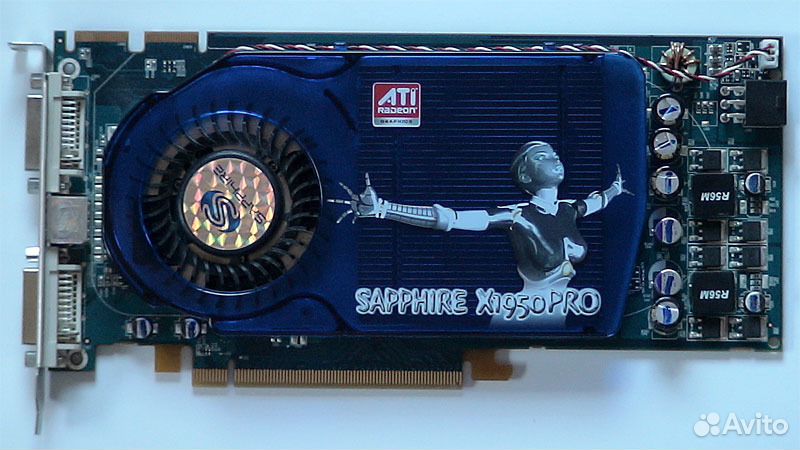 ATI has held a slight edge in DirectX games (most titles), and Nvidia has won on OpenGL-based titles (Doom 3, Quake 4, Prey), but neither was ahead enough to really claim outright dominance. And we can’t say that ATI blows Nvidia out of the water now, but we do have to hand it the overall edge for its gains on Quake 4 and, by extension, OpenGL. We also have to thank our colleague Sarju Shah at GameSpot for providing us with the benchmarks this time around. You can check out his analysis of the card here.
ATI has held a slight edge in DirectX games (most titles), and Nvidia has won on OpenGL-based titles (Doom 3, Quake 4, Prey), but neither was ahead enough to really claim outright dominance. And we can’t say that ATI blows Nvidia out of the water now, but we do have to hand it the overall edge for its gains on Quake 4 and, by extension, OpenGL. We also have to thank our colleague Sarju Shah at GameSpot for providing us with the benchmarks this time around. You can check out his analysis of the card here.
3D Mark 2005
(Longer bars indicate better performance)
| 1,280×1,024 |
ATI Radeon X1950 XTX (512MB)
6234
Nvidia GeForce 7900 GTX (512MB)
6076
The Elder Scrolls IV: Oblivion (in fps)
(Longer bars indicate better performance)
1,600×1,200 (max.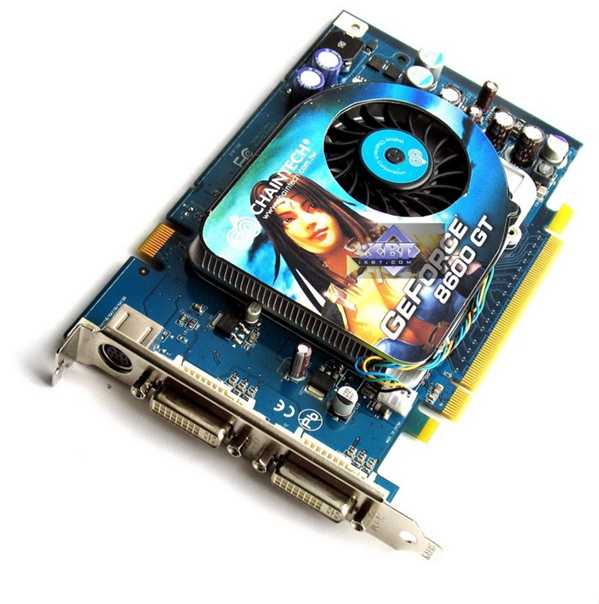 quality, no AA, no AF) quality, no AA, no AF) |
ATI Radeon X1950 XTX (512MB)
33
Nvidia GeForce 7900 GTX (512MB)
28
Half-Life 2: Lost Coast demo, 4X antialiasing, 16X anisotropic filtering (in fps)
(Longer bars indicate better performance)
| 1,,920×1,440 (4X antialiasing, 16X anisotropic filtering) | 1,600×1,200 (4X antialiasing, 16X anisotropic filtering) |
ATI Radeon X1950 XTX (512MB)
67
86
Nvidia GeForce 7900 GTX (512MB)
67
85
Quake 4 Timedemo #5, high quality mode (4X antialiasing, 8X anisotropic filtering) (in fps)
(Longer bars indicate better performance)
| High quality mode, 4X antialiasing, 8X anisotropic filtering |
ATI Radeon X1950 XTX (512MB)
74
Nvidia GeForce 7900 GTX (512MB)
63
As you can see from the charts, the Radeon X1950 XTX has a 10-frames-per-second lead over the GeForce 7900 XTX on the 1,600×1,200 resolution Quake 4 test and faster or equivalent performance on every other test.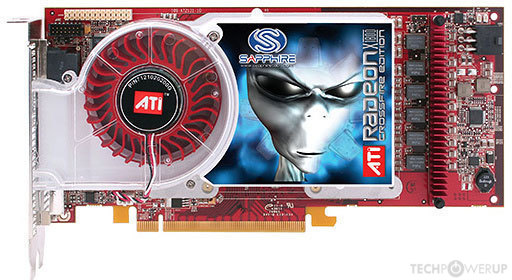 It’s not a total drubbing, but we have to hand the victory to ATI, at least on single-chip cards. It’s also worth mentioning that Nvidia still hasn’t answered ATI’s so-called Chuck Patch, an unofficial driver update that lets you turn on high dynamic range (HDR) lighting and antialiasing at the same time in some games. This gives ATI an image-quality advantage in the games that support it (The Elder Scrolls IV: Oblivion, for one), because with Nvidia’s GeForce cards, you have to choose between turning on HDR lighting or antialiasing; you can’t have both.
It’s not a total drubbing, but we have to hand the victory to ATI, at least on single-chip cards. It’s also worth mentioning that Nvidia still hasn’t answered ATI’s so-called Chuck Patch, an unofficial driver update that lets you turn on high dynamic range (HDR) lighting and antialiasing at the same time in some games. This gives ATI an image-quality advantage in the games that support it (The Elder Scrolls IV: Oblivion, for one), because with Nvidia’s GeForce cards, you have to choose between turning on HDR lighting or antialiasing; you can’t have both.
Our major caveat comes with multi-3D chip configurations. Both ATI’s CrossFire and Nvidia’s SLI let you add two 3D graphics cards to a compatible system, and Nvidia has the aforementioned GeForce 7950 GX2, which has two chips on one card, as well as Quad SLI, which pairs two 7950 GX2’s, giving you four 3D chips working together. Such multichip configurations not only give you faster performance at common resolutions, but they also provide playable performance at extremely high resolutions—with high-level image quality settings turned on. ATI will also sell a Radeon X1950 XT CrossFire Edition card on Sept. 14 to go along with the stand-alone model, but we don’t recommend it. The CrossFire Edition card will run you another $450, putting your soon-to-be-obsolete 3D card costs at $900 (or two-and-a-half Xbox 360’s). To be fair, we don’t recommend purchasing any new multicard or multichip setup at the moment, so Nvidia’s SLI is out, too. The arrival of the next-gen cards is just too close to spend that kind of money right now.
ATI will also sell a Radeon X1950 XT CrossFire Edition card on Sept. 14 to go along with the stand-alone model, but we don’t recommend it. The CrossFire Edition card will run you another $450, putting your soon-to-be-obsolete 3D card costs at $900 (or two-and-a-half Xbox 360’s). To be fair, we don’t recommend purchasing any new multicard or multichip setup at the moment, so Nvidia’s SLI is out, too. The arrival of the next-gen cards is just too close to spend that kind of money right now.
Finally, when ATI told us that it was unveiling the Radeon X1950, the CrossFire Edition, and its other new cards today, but wasn’t selling them until Sept. 14, we were reminded of the painful launch of the Radeon X1000 series, in which ATI failed to communicate the significant delay between the press coverage and the availability. We weren’t going to fall for that again, so we asked ATI’s Will Wallis to explain why this isn’t another paper launch. Here’s what he told us:
The problem is that.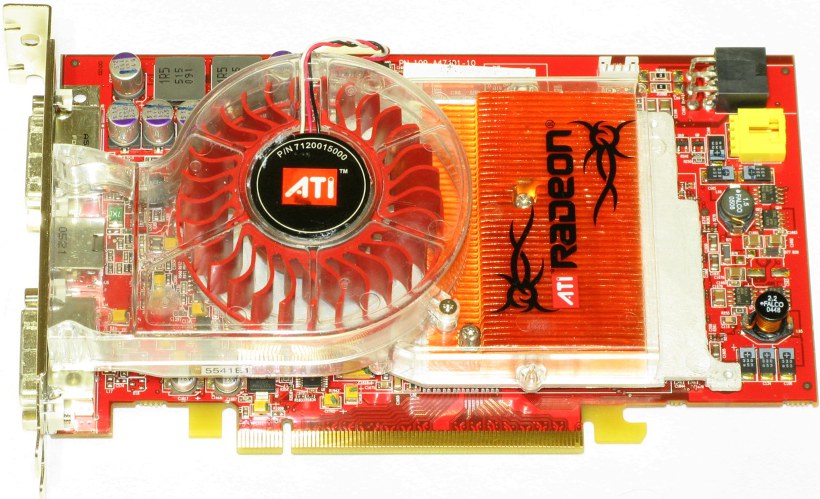 ..there were similar meetings that had taken place in Europe, and three print publications are now locked and loaded to run stories on the X1950 cards on August 25, essentially breaking the NDA if we move it to the 14. The only fair thing that we could do for all involved is to keep the launch date of August 23 so that no one breaks the NDA, and everyone has a fair shot to report the news. Between August 23 and September 14, partners will ship cards to various system integrators, retailers, and e-tailers, and they’ll build systems and move the cards through their supply chain up until the 14. They’ll also take preorders up until the 14, at which point everything will ship.
..there were similar meetings that had taken place in Europe, and three print publications are now locked and loaded to run stories on the X1950 cards on August 25, essentially breaking the NDA if we move it to the 14. The only fair thing that we could do for all involved is to keep the launch date of August 23 so that no one breaks the NDA, and everyone has a fair shot to report the news. Between August 23 and September 14, partners will ship cards to various system integrators, retailers, and e-tailers, and they’ll build systems and move the cards through their supply chain up until the 14. They’ll also take preorders up until the 14, at which point everything will ship.
In every meeting with ATI since the debacle of the Radeon X800 launch, its representatives have stressed to us that they’ve learned their lesson and that they don’t intend to make the same mistake. Their remorse has felt genuine, and we also can’t believe that ATI would really want to frustrate both its customers and the technology press to such an extent again. We’re going to give ATI the benefit of the doubt on this one, and we anticipate that on September 14, the new cards really will ship. If the situation turns out differently, you can expect that we’ll report on it.
We’re going to give ATI the benefit of the doubt on this one, and we anticipate that on September 14, the new cards really will ship. If the situation turns out differently, you can expect that we’ll report on it.
ATI test bed
Athlon 64 FX-62; Asus A8RMVP Deluxe motherboard, 1GB Corsair XMS DDR SDRAM; 160GB Seagate 7,200rpm Serial ATA hard drives; ATI Catalyst beta 8-282-060802a-035384E
Nvidia test bed
Athlon 64 FX-62; Asus A8N32-SLI motherboard, 1GB Corsair XMS DDR SDRAM; 160GB Seagate 7,200rpm Serial ATA hard drives; Nvidia Forceware 91.31
Radeon X1950 XTX — Technical City
ATI
Radeon X1950 XTX
Buy
- Interface PCIe 1.0 x16
- Core clock speed 650 MHz
- Max video memory 512 MB
- Memory type GDDR4
- Memory clock speed 2000 MHz
- Maximum resolution
Summary
ATI started Radeon X1950 XTX sales 17 October 2006 at a recommended price of $449.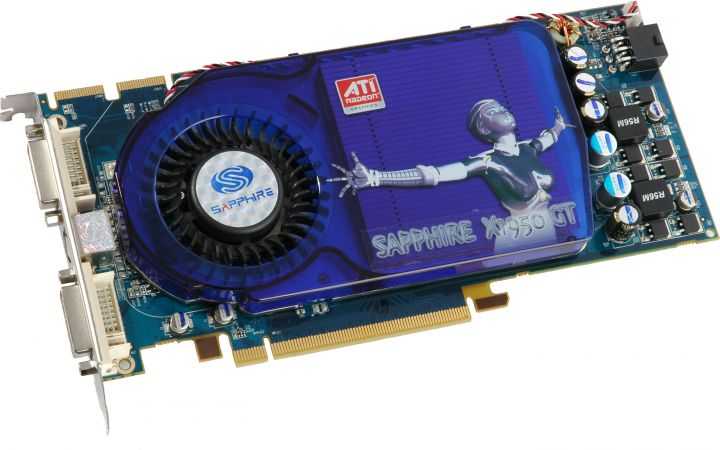 This is R500 architecture desktop card based on 90 nm manufacturing process and primarily aimed at gamers. 512 MB of GDDR4 memory clocked at 2 GHz are supplied, and together with 256 Bit memory interface this creates a bandwidth of 64 GB/s.
This is R500 architecture desktop card based on 90 nm manufacturing process and primarily aimed at gamers. 512 MB of GDDR4 memory clocked at 2 GHz are supplied, and together with 256 Bit memory interface this creates a bandwidth of 64 GB/s.
Compatibility-wise, this is dual-slot card attached via PCIe 1.0 x16 interface. Its manufacturer default version has a length of 230 mm. 1x 6-pin power connector is required, and power consumption is at 125 Watt.
We have no data on Radeon X1950 XTX benchmark results.
General info
Of Radeon X1950 XTX’s architecture, market segment and release date.
| Place in performance rating | not rated | |
| Architecture | R500 (2005−2007) | |
| GPU code name | R580+ | |
| Market segment | Desktop | |
| Release date | 17 October 2006 (15 years ago) | |
| Launch price (MSRP) | $449 | |
| Current price | $47 (0. 1x MSRP) 1x MSRP) |
of 49999 (A100 SXM4) |
Technical specs
Radeon X1950 XTX’s general performance parameters such as number of shaders, GPU base clock, manufacturing process, texturing and calculation speed. These parameters indirectly speak of Radeon X1950 XTX’s performance, but for precise assessment you have to consider its benchmark and gaming test results.
| Core clock speed | 650 MHz | of 2610 (Radeon RX 6500 XT) |
| Number of transistors | 384 million | of 14400 (GeForce GTX 1080 SLI Mobile) |
| Manufacturing process technology | 90 nm | of 4 (GeForce RTX 4080 Ti) |
| Thermal design power (TDP) | 125 Watt | of 900 (Tesla S2050) |
| Texture fill rate | 10.40 | of 939.8 (h200 SXM5) |
Compatibility, dimensions and requirements
Information on Radeon X1950 XTX’s compatibility with other computer components.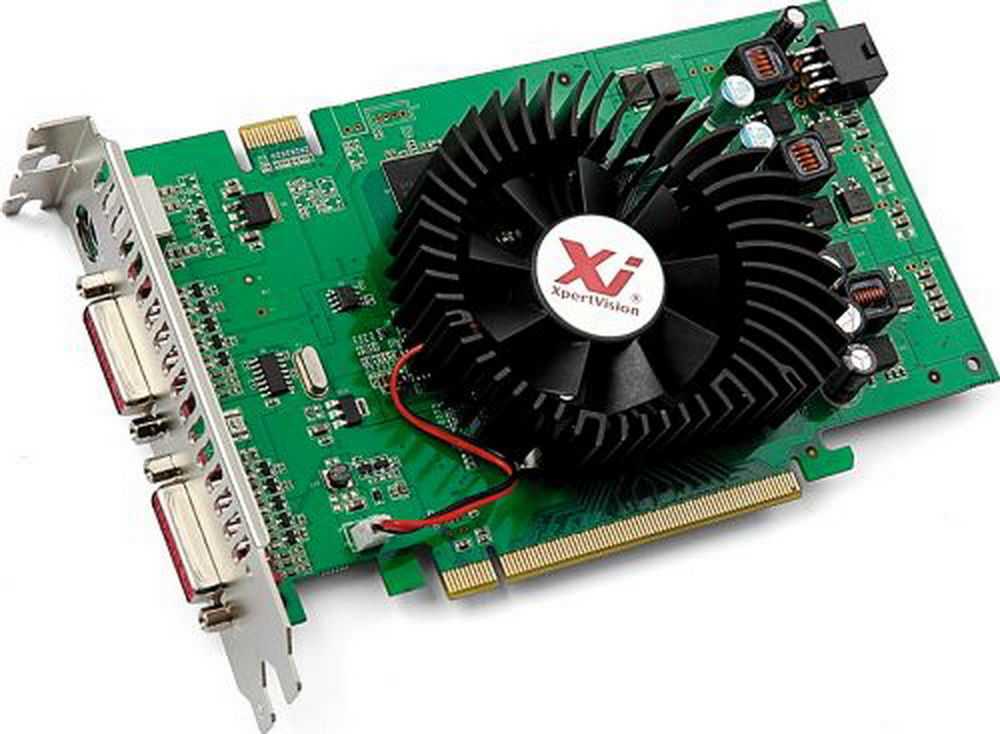 Useful when choosing a future computer configuration or upgrading an existing one. For desktop video cards it’s interface and bus (motherboard compatibility), additional power connectors (power supply compatibility).
Useful when choosing a future computer configuration or upgrading an existing one. For desktop video cards it’s interface and bus (motherboard compatibility), additional power connectors (power supply compatibility).
| Interface | PCIe 1.0 x16 | |
| Length | 230 mm | |
| Width | 2-slot | |
| Supplementary power connectors | 1x 6-pin |
Memory
Parameters of memory installed on Radeon X1950 XTX: its type, size, bus, clock and resulting bandwidth. Note that GPUs integrated into processors don’t have dedicated memory and use a shared part of system RAM.
| Memory type | GDDR4 | |
| Maximum RAM amount | 512 MB | of 128 (Radeon Instinct MI250X) |
| Memory bus width | 256 Bit | of 8192 (Radeon Instinct MI250X) |
| Memory clock speed | 2000 MHz | of 21000 (GeForce RTX 3090 Ti) |
| Memory bandwidth | 64 GB/s | of 14400 (Radeon R7 M260) |
Video outputs and ports
Types and number of video connectors present on Radeon X1950 XTX.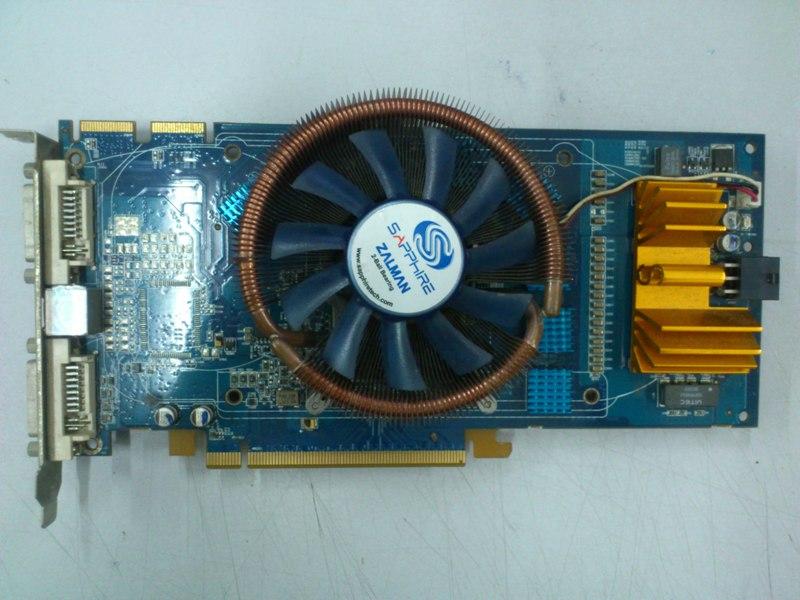 As a rule, this section is relevant only for desktop reference video cards, since for notebook ones the availability of certain video outputs depends on the laptop model.
As a rule, this section is relevant only for desktop reference video cards, since for notebook ones the availability of certain video outputs depends on the laptop model.
| Display Connectors | 2x DVI, 1x S-Video |
API support
APIs supported by Radeon X1950 XTX, sometimes including their particular versions.
| DirectX | 9.0c (9_3) | |
| Shader Model | 3.0 | |
| OpenGL | 2.0 | of 4.6 (GeForce GTX 1080 Mobile) |
| OpenCL | N/A | |
| Vulkan | N/A |
Benchmark performance
Non-gaming benchmark performance of Radeon X1950 XTX. Note that overall benchmark performance is measured in points in 0-100 range.
Similar GPUs
Here is our recommendation of several graphics cards that are more or less close in performance to the one reviewed.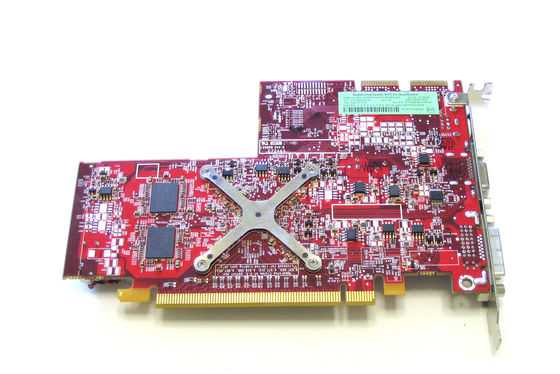
Recommended processors
These processors are most commonly used with Radeon X1950 XTX according to our statistics.
Athlon II
X2 240
10%
Ryzen Threadripper
PRO 3995WX
10%
Core 2
Duo E7400
10%
Athlon 64
X2 4200+
10%
Xeon
X3360
10%
Core 2
Duo E6750
10%
Phenom II
X3 N830
10%
Xeon
X5492
10%
Phenom II
X6 1055T (125W)
10%
Xeon
L5410
10%
User rating
Here you can see the user rating of the graphics card, as well as rate it yourself.
Questions and comments
Here you can ask a question about Radeon X1950 XTX, agree or disagree with our judgements, or report an error or mismatch.
Please enable JavaScript to view the comments powered by Disqus.
ATI TECHNOLOGIES RADEON X1950 XTX USER MANUAL Pdf Download
Table Of Contents
5
-
page
of
92 -
Contents
-
Table of Contents
-
Troubleshooting
-
Bookmarks
Advertisement
Table of Contents
-
-
7
Introduction
-
13
Installing Hardware
-
17
Using Multiple Displays
-
21
Installing Software and Drivers
-
27
Catalyst Control Center
-
35
Using TV Display and Capture Features
-
41
Using the Radeon X1950 XTX with Crossfire
-
49
Crossfire FAQ
-
55
Reference
-
65
Glossary
Radeon
X1950 XTX
®
User’s Guide
P/N 137-41074-10
ATI
Table of Contents
Previous Page
Next Page
Table of Contents
-
-
7
Introduction
-
13
Installing Hardware
-
17
Using Multiple Displays
-
21
Installing Software and Drivers
-
27
Catalyst Control Center
-
35
Using TV Display and Capture Features
-
41
Using the Radeon X1950 XTX with Crossfire
-
49
Crossfire FAQ
-
55
Reference
-
65
Glossary
Related Manuals for ATI Technologies RADEON X1950 XTX
-
Video Card ATI Technologies Radeon X1600 Series User Manual
Ati technologies radeon graphics card user’s guide (153 pages)
-
Video Card ATI Technologies X1300 — Radeon 256 MB PCI Express Video Card User Manual
User guide (148 pages)
-
Video Card ATI Technologies X1800 — 100-435705 Radeon XT 512MB GDDR3 SDRAM PCI Express x16 Graphics Card User Manual
User guide (162 pages)
-
Video Card ATI Technologies X1900 — Radeon XTX 512 MB PCIE Video Card User Manual
User guide (160 pages)
-
Video Card ATI Technologies All-In-Wonder X1900 Series Installation And Setup User’s Manual
(66 pages)
-
Video Card ATI Technologies Radeon X1900 CrossFire Edition User Manual
(90 pages)
-
Video Card ATI Technologies X1900GT — Radeon 256MB Pcie User Manual
User guide (99 pages)
-
Video Card ATI Technologies Workstation x1000 User Manual
Ati fire gl 4 graphics card users guide (60 pages)
-
Video Card ATI Technologies Workstation x1000 User Manual
Ati radeon 7000 graphics card users guide (36 pages)
-
Video Card ATI Technologies All-In-Wonder X1800 Series Installation And Setup User’s Manual
(60 pages)
-
Video Card ATI Technologies Radeon X1950 Pro CrossFire Getting Started Manual
(32 pages)
-
Video Card ATI Technologies FireGL X1-256p User Manual
Advanced workstation 3d graphics accelerator (61 pages)
-
Video Card ATI Technologies X1650 — AMD Radeon XT 256MB PCI-E Graphics Card User Manual
User guide (90 pages)
-
Video Card ATI Technologies RADEON X1650 User Manual
Ati technologies computer hardware user manual (71 pages)
-
Video Card ATI Technologies X800 — 100-435317 Radeon XT Mac Edition User Manual
Mac edition (25 pages)
-
Video Card ATI Technologies X700 — Radeon Pro 256 MB PCIe User Manual
User guide (61 pages)
Summary of Contents for ATI Technologies RADEON X1950 XTX
This manual is also suitable for:
100 435846 — radeon x1950 xtx crossfire edition 512 mb 3d video card
ATI’s Radeon X1950 XTX graphics cards
PC GRAPHICS TECHNOLOGY HAS EARNED itself a reputation as a fast-moving locus of innovation, and that rep is certainly well deserved.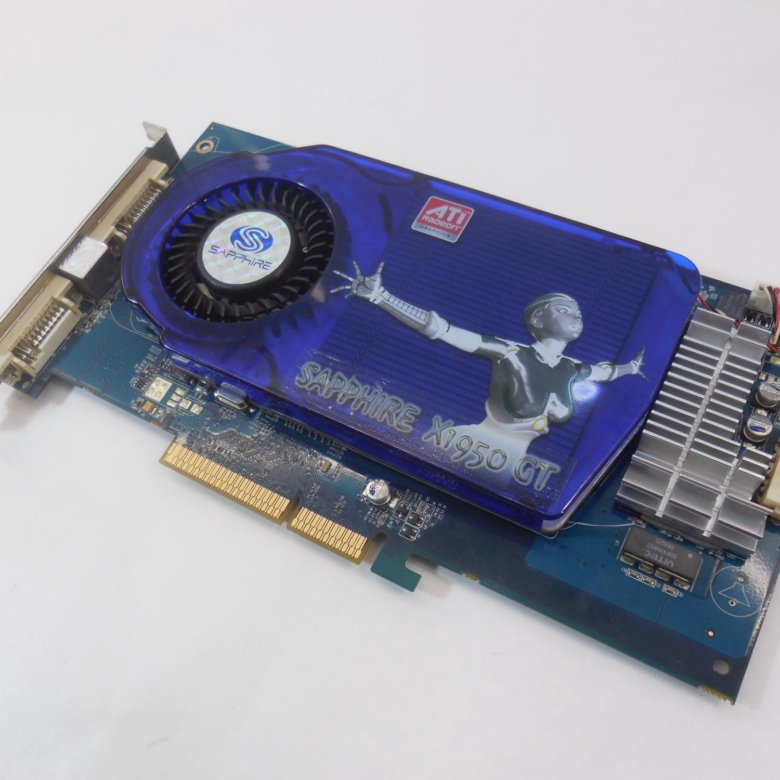 Still, the much-ballyhooed talk of six-month product cycles and the breakneck pace of change is a little bit overheated. About 25% of everything that happens in PC graphics involves truly novel innovations, such as new GPU microarchitectures with features never seen before. The rest is mostly just dance remixes.
Still, the much-ballyhooed talk of six-month product cycles and the breakneck pace of change is a little bit overheated. About 25% of everything that happens in PC graphics involves truly novel innovations, such as new GPU microarchitectures with features never seen before. The rest is mostly just dance remixes.
Today is a day of dance remixes for ATI. You can hear the thump-thump-thump of the drum track throbbing in the background if you listen closely. Fresh off the announcement of its public engagement to AMD, the red team has cued up five new Radeon video cards, from the low end to the very high end, and they are all remakes of already familiar tunes.
Fortunately, in the world of video cards, remixes actually bring improvements most of the time. They tend to offer more graphics horsepower at lower prices, not just a torrid, syncopated rhythm from a drum sequencer. The new flavors of Radeons range from the X1950 XTX at just under five hundred bucks to the X1300 XT at well under a hundred.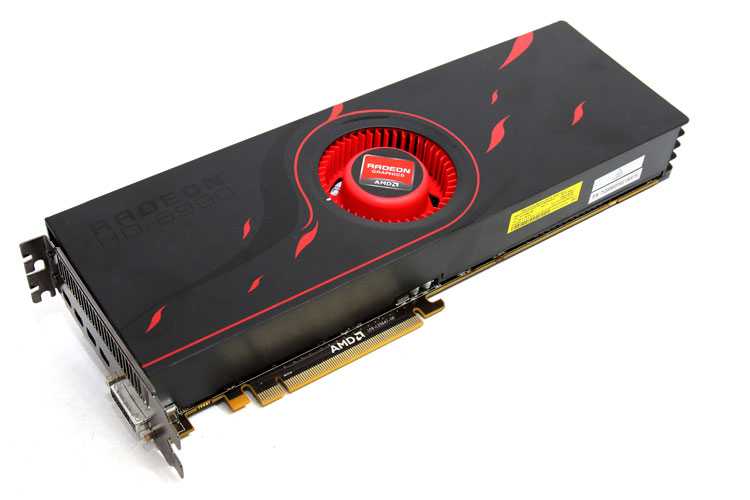 In the middle of the pack is a potential gem for PC enthusiasts: a new $279 version of the Radeon X1900 XT that looks to redefine the price-performance equation. Keep reading for the info on ATI’s revamped lineup, including our tests of the most appealing cards for enthusiasts.
In the middle of the pack is a potential gem for PC enthusiasts: a new $279 version of the Radeon X1900 XT that looks to redefine the price-performance equation. Keep reading for the info on ATI’s revamped lineup, including our tests of the most appealing cards for enthusiasts.
The Radeon X1000 remixes
All told, ATI is unveiling five new video cards today. To cover them, we’ll start at the high end and move down.
The Radeon X1950 CrossFire Edition (left) and Radeon X1950 XTX (right)
The two cards you see pictured above are the Radeon X1950 XTX and its CrossFire Edition. The X1950 XTX is based on a chip that ATI has dubbed “R580+” for its status as a tweaked version of the R580 GPU found in all Radeon X1900-series graphics cards. Like its forebear, the R580+ is still manufactured at TSMC on a 90nm fabrication process, and it still tops out at 650MHz on the Radeon X1950 XTX, just as the R580 does on the X1900 XTX. The plus, however, extends ATI’s tradition of pioneering new types of graphics RAM by adding support for GDDR4 memory. ATI’s PR types claim GDDR4 memory uses less power per clock cycle than the current GDDR3-standard memory chips.
ATI’s PR types claim GDDR4 memory uses less power per clock cycle than the current GDDR3-standard memory chips.
So the big gain with the R580+ is memory clock speeds. They’re up from 725MHz on the X1900 XTX to a cool 1GHz on the X1950 XTXor 2GHz effective, once you take the double data rate memory thing into account. The faster RAM gives the Radeon X1950 XTX a grand total of 64GB/s of peak theoretical memory bandwidth, well above the 49.6GB/s possible on the X1900 XTX.
That, of course, raises an intriguing question: was the Radeon X1900 XTX really so limited by memory bandwidth that the switch to a new RAM type alone can yield real performance benefits? We’ll soon find out.
You may also have noticed the X1950’s fancy new cooler. ATI says it switched providers in order to get this puppy, which looks to be an improvement on the double-wide cooler used in the X1800 and X1900-series cards. This fansink still exhausts hot air out the back of the PC case, but the blower is located further inside of the case, with the aim of reducing the noise that escapes the enclosure. The new cooler is also endowed with a heatpipe that pulls heat away from the GPU into a battalion of copper fins. You won’t doubt that the thing is real copper when you pick it up; it carries more heft than a U.N. resolution.
The new cooler is also endowed with a heatpipe that pulls heat away from the GPU into a battalion of copper fins. You won’t doubt that the thing is real copper when you pick it up; it carries more heft than a U.N. resolution.
At the back of the Radeon X1950 XTX is a pair of DVI-out ports and a video-in/video-out connector. The “built by ATI” versions of the X1950 will have support for HDCP via the DVI ports, enabling playback of DRM-encrusted Blu-ray and HD-DVD content. If you’re buying a version of the X1950 XTX from an ATI partner, you’ll need to check the spec sheet to ensure HDCP support is present, should you want it.
Oh, and of course, this is a PCI Express video card; we have no word on plans for an AGP version.
The Radeon X1950 CrossFire Edition is essentially the same thing as the X1950 XTX, save for the fact that it adds a special compositing engine for use with multi-GPU setups. ATI hasn’t yet incorporated this image compositing engine into the GPU, so a CrossFire Edition card is still required.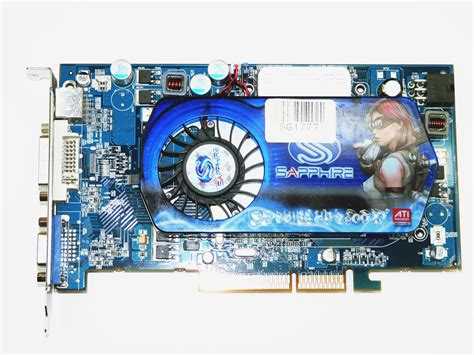 This time around, though, the CrossFire card runs at the same clock speeds as the XTX.
This time around, though, the CrossFire card runs at the same clock speeds as the XTX.
ATI says to expect both the Radeon X1950 XTX and the CrossFire Edition to sell for $449. That puts it directly opposite the current prices of the GeForce 7900 GTX at online vendors.
The Radeon X1900 XT 256MB (left) and Radeon X1950 XTX (right)
On the left above is the next stop in our tour through the new Radeons. This is a 256MB version of the already-familiar Radeon X1900 XT. This card is still based on an R580 GPU clocked at 625MHz and mated with 725MHz memory, so it packs nearly as much graphics processing power as the former top-of-the-line Radeon X1900 XTX. The only change here is half the memory of the original X1900 XT and a much nicer price$279, to be exact, about the price of a GeForce 7900 GT. The X1900 XT 256MB offers a heckuva lot of graphics processing power for the money.
One of the few potential drawbacks to the X1900 XT 256MB is the lack of a CrossFire Edition card that’s well matched to it. The card will operate in CrossFire mode with either the Radeon X1900 CrossFire or the Radeon X1950 CrossFire, but both of those cards are more expensive and will have to disable half of their RAM in order to work with it. ATI claims to be evaluating the possibility of enabling dongle-free CrossFire that operates via PCI Express for the X1900 XT 256MB, but they haven’t committed to a timetable for delivering it. That’s probably just as well, since this beast is probably too fast to work well in a PCI-E-based scheme.
The card will operate in CrossFire mode with either the Radeon X1900 CrossFire or the Radeon X1950 CrossFire, but both of those cards are more expensive and will have to disable half of their RAM in order to work with it. ATI claims to be evaluating the possibility of enabling dongle-free CrossFire that operates via PCI Express for the X1900 XT 256MB, but they haven’t committed to a timetable for delivering it. That’s probably just as well, since this beast is probably too fast to work well in a PCI-E-based scheme.
With the introduction of these new cards, the current Radeon X1900 XT 512MB and X1900 XTX will eventually be phased out. Such things take time, though, so both products will probably linger in the market for some time to come.
We have the new X1900 and X1950 cards in our hot little hands for testing, but we haven’t get gotten our mitts on the other two cards ATI is cooking up. The first of those is the Radeon X1650 Pro, which is a dead ringer for the current Radeon X1600 XT.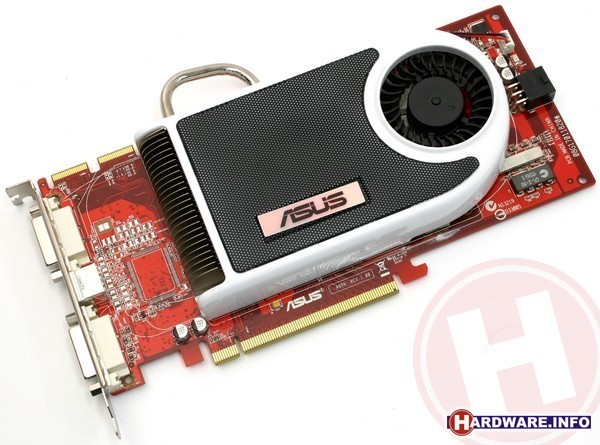 Both are based on the RV530 GPU. While the X1600 XT runs at 590MHz with 690MHz memory, the X1650 Pro runs at 600MHz with a 700MHz RAM frequency. Accompanying this fine-tuning of clock speeds is a price cut to $99 for the X1650 Pro, between 10 and 40 bucks less than current X1600 XT prices. The X1650 Pro is the first installment in the plan for a new Radeon X1650 family to supplant the X1600 line with faster, cheaper parts.
Both are based on the RV530 GPU. While the X1600 XT runs at 590MHz with 690MHz memory, the X1650 Pro runs at 600MHz with a 700MHz RAM frequency. Accompanying this fine-tuning of clock speeds is a price cut to $99 for the X1650 Pro, between 10 and 40 bucks less than current X1600 XT prices. The X1650 Pro is the first installment in the plan for a new Radeon X1650 family to supplant the X1600 line with faster, cheaper parts.
If a 99-dollar video card is beyond your means, there’s now an option at $89 in the form of the Radeon X1300 XT. This is the first and only member of the X1300 lineup to be based on the same RV530 chip found in the X1600/X1650 lines. For this application, the RV530 will be clocked at 500MHz and paired with 400MHz memory, so performance should be quite a bit lower than the X1650 Pro. (Think twice about saving that ten bucks, folks.) However, the XT should easily be the fastest Radeon X1300 thanks to its 12 pixel shader processors, five vertex shader processors, and eight Z-compare units, versus the RV515’s four of each. The remaining RV515-based members Radeon X1300 family will stick around, but come down in price to slot below the X1300 XT.
The remaining RV515-based members Radeon X1300 family will stick around, but come down in price to slot below the X1300 XT.
The scoop on pricing and availability
All of these new cards are scheduled to become available at online retailers on September 14. We’ve seen claims about pricing and availability fail to work out as planned in the past, though, so we talked to ATI board partners to see what they had to say. Fortunately, both Diamond Multimedia and Connect3D confirmed that they’re on track to hit that date.
Diamond is planning a full lineup of new Radeons from top to bottom, and they were willing to divulge suggested retail pricing for those products. Both their Radeon X1950 XTX and its CrossFire Edition are slated to list at $499, and their X1900 XT 256MB should list at $399. Diamond will also be building both PCI-E and AGP versions of the Radeon X1650 Pro with 512MB of memory onboard, and both will list at $229, while their Radeon X1300 XT with a PCI Express interface and 256MB of RAM will list at $149.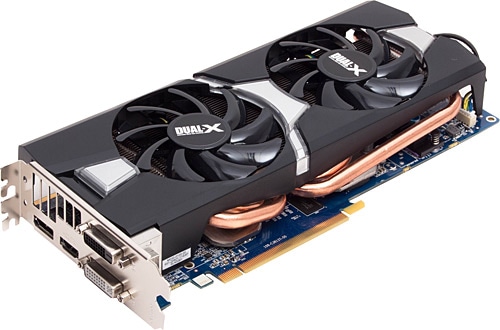 That may sound pricey, but those are the price tags you can expect to see at big-box retail stores. Online vendors will discount substantially off of list price, as always seems to be the case. Diamond’s Radeon X1900 XT 512MB, for example, is currently selling for under $449 online, well below the $499 suggested retail price.
That may sound pricey, but those are the price tags you can expect to see at big-box retail stores. Online vendors will discount substantially off of list price, as always seems to be the case. Diamond’s Radeon X1900 XT 512MB, for example, is currently selling for under $449 online, well below the $499 suggested retail price.
The folks at Connect3D are even more oriented toward selling through online stores, and they were willing to give us a sense of likely pricing at e-tailers. Their versions of the Radeon X1950 XTX and CrossFire will come in at “under $450” at places like Newegg right out of the gate, and their X1900 XT 256MB should arrive at “well under $300,” likely in the neighborhood of $275all of which is right in line with ATI’s projections. They also let slip word of another new card coming a few weeks behind the others: the Radeon X1950 Pro, which won’t have all 48 pixel shaders enabled on it. They’re expecting 256MB versions of the X1950 Pro to sell for under $199, with the 512MB version arriving at about $240. They were especially excited about the X1950 Pro and X1900 XT 256MB, which they acknowledged will fill some gaps in ATI’s enthusiast-class product lineup.
They were especially excited about the X1950 Pro and X1900 XT 256MB, which they acknowledged will fill some gaps in ATI’s enthusiast-class product lineup.
Both Diamond and Connect3D told us they were considering producing liquid-cooled versions of the Radeon X1950 XTX, as well, although those products aren’t likely to arrive in the first wave of X1950 cards.
Our testing methods
As ever, we did our best to deliver clean benchmark numbers. Tests were run at least three times, and the results were averaged.
Our test systems were configured like so:
| Processor | Core 2 Extreme X6800 2.93GHz | Core 2 Extreme X6800 2.93GHz |
| System bus | 1066MHz (266MHz quad-pumped) | 1066MHz (266MHz quad-pumped) |
| Motherboard | Asus P5N32-SLI Deluxe | Intel D975XBX |
| BIOS revision | 0204 | BX97510J.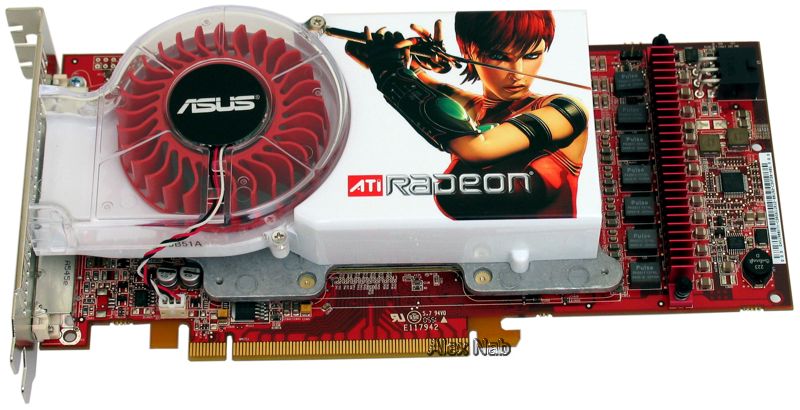 86A.1073.2006.0427.1210 86A.1073.2006.0427.1210 |
| North bridge | nForce4 SLI X16 Intel Edition | 975X MCH |
| South bridge | nForce4 MCP | ICH7R |
| Chipset drivers | ForceWare 6.86 | INF Update 7.2.2.1007 Intel Matrix Storage Manager 5.5.0.1035 |
| Memory size | 2GB (2 DIMMs) | 2GB (2 DIMMs) |
| Memory type | Corsair TWIN2X2048-8500C5 DDR2 SDRAM at 800MHz | Corsair TWIN2X2048-8500C5 DDR2 SDRAM at 800MHz |
| CAS latency (CL) | 4 | 4 |
| RAS to CAS delay (tRCD) | 4 | 4 |
| RAS precharge (tRP) | 4 | 4 |
| Cycle time (tRAS) | 15 | 15 |
| Hard drive | Maxtor DiamondMax 10 250GB SATA 150 | Maxtor DiamondMax 10 250GB SATA 150 |
| Audio | Integrated nForce4/ALC850 with Realtek 5. 10.0.6150 drivers 10.0.6150 drivers |
Integrated ICH7R/STAC9221D5 with SigmaTel 5.10.5143.0 drivers |
| Graphics | Radeon X1900 XT 256MB PCI-E with Catalyst 8.282-060802a-03584E-ATI drivers |
Radeon X1950 XTX 512MB PCI-E + Radeon X1950 CrossFire with Catalyst 8.282-060802a-03584E-ATI drivers |
| Radeon X1900 XTX 512MB PCI-E with Catalyst 8.282-060802a-03584E-ATI drivers |
||
| Radeon X1950 XTX 512MB PCI-E with Catalyst 8.282-060802a-03584E-ATI drivers |
||
| GeForce 7900 GT 256MB PCI-E with ForceWare 91.31 drivers |
||
| GeForce 7900 GTX 512MB PCI-E with ForceWare 91. 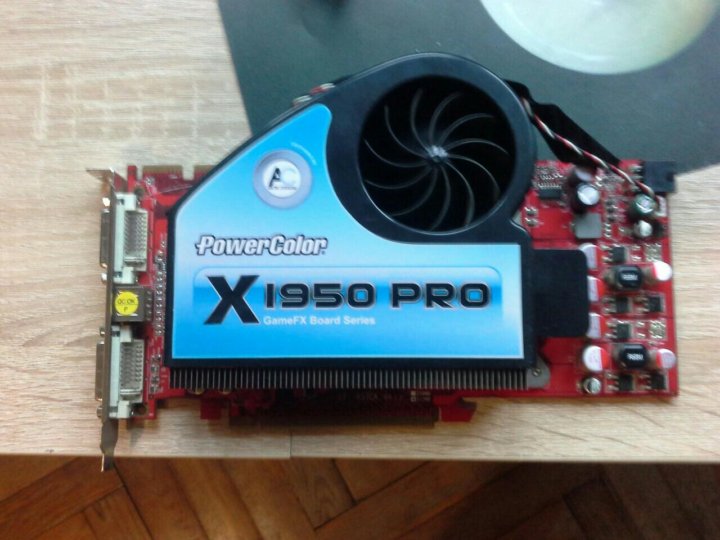 31 drivers 31 drivers |
||
| Dual GeForce 7900 GTX 512MB PCI-E with ForceWare 91.31 drivers |
||
| GeForce 7950 GX2 1GB PCI-E with ForceWare 91.31 drivers |
||
| OS | Windows XP Professional (32-bit) | |
| OS updates | Service Pack 2, DirectX 9.0c update (August 2006) | |
Thanks to Corsair for providing us with memory for our testing. Their quality, service, and support are easily superior to no-name DIMMs.
Our test systems were powered by OCZ GameXStream 700W power supply units. Thanks to OCZ for providing these units for our use in testing.
Unless otherwise specified, image quality settings for the graphics cards were left at the control panel defaults.
The test systems’ Windows desktops were set at 1280×960 in 32-bit color at an 85Hz screen refresh rate. Vertical refresh sync (vsync) was disabled for all tests.
We used the following versions of our test applications:
- Quake 4 1.3 with trdm1 netdemo
- The Elder Scrolls IV: Oblivion 1.1
- Ghost Recon Advanced Warfighter 1.21
- F.E.A.R. 1.07
- Half-Life 2: Episode One with trdem1 demo
- FutureMark 3DMark06 Build 1.02
- FRAPS 2.7.2
The tests and methods we employ are generally publicly available and reproducible. If you have questions about our methods, hit our forums to talk with us about them.
Pixel-filling power
We’ll begin our testing with a quick look at some theoretical numbers for pixel throughput. These numbers are mainly related to the card’s ability to push pixels through the traditional graphics pipeline, and they are becoming increasingly less important as programmable shading becomes more prevalent.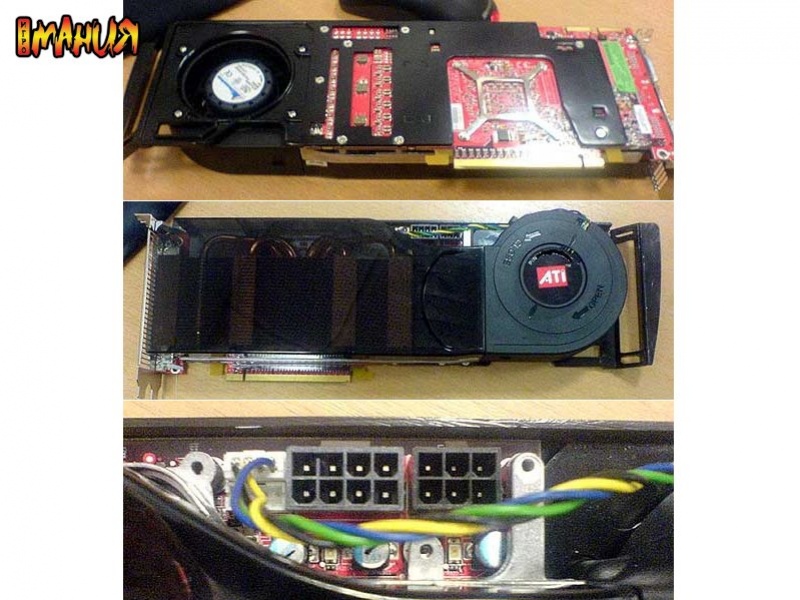 They are still relevant in many of today’s games, though, so we’ll have a quick look at them. I’ve included the Radeon X1300 XT and Radeon X1650 Pro in the table below for reference, even though we don’t yet have examples of those cards to test.
They are still relevant in many of today’s games, though, so we’ll have a quick look at them. I’ve included the Radeon X1300 XT and Radeon X1650 Pro in the table below for reference, even though we don’t yet have examples of those cards to test.
| Core clock (MHz) |
Pixels/ clock |
Peak fill rate (Mpixels/s) |
Textures/ clock |
Peak fill rate (Mtexels/s) |
Effective memory clock (MHz) |
Memory bus width (bits) |
Peak memory bandwidth (GB/s) |
|
| Radeon X1300 XT | 500 | 4 | 2000 | 4 | 2000 | 800 | 128 | 12.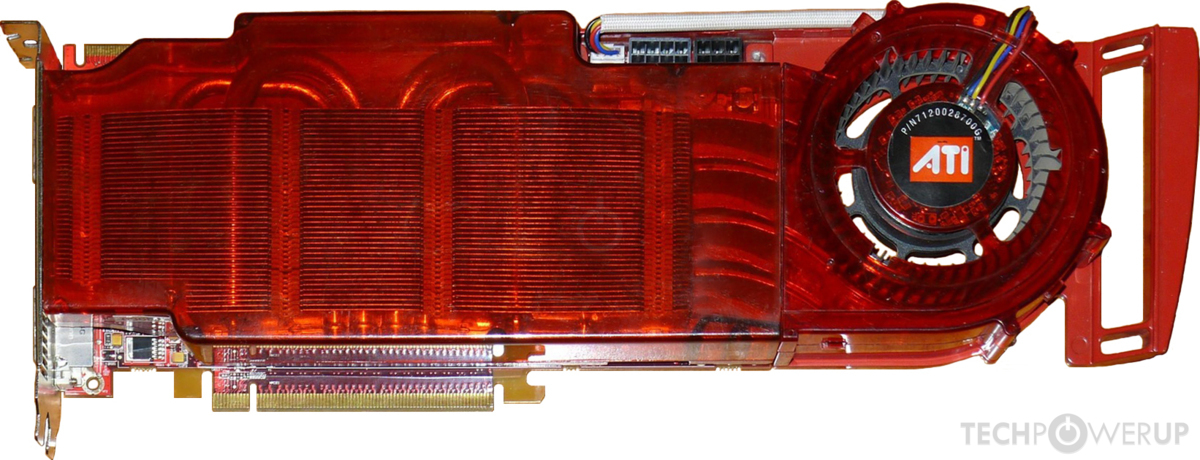 8 8 |
| Radeon X1600 XT | 590 | 4 | 2360 | 4 | 2360 | 1380 | 128 | 22.1 |
| Radeon X1650 Pro | 600 | 4 | 2400 | 4 | 2400 | 1400 | 128 | 22. 4 4 |
| Radeon X1800 GTO | 500 | 12 | 6000 | 12 | 6000 | 1000 | 256 | 32.0 |
| GeForce 7600 GT | 560 | 8 | 4480 | 12 | 6720 | 1400 | 128 | 22. 4 4 |
| GeForce 7800 GT | 400 | 16 | 6400 | 20 | 8000 | 1000 | 256 | 32.0 |
| All-In-Wonder X1900 | 500 | 16 | 8000 | 16 | 8000 | 960 | 256 | 30.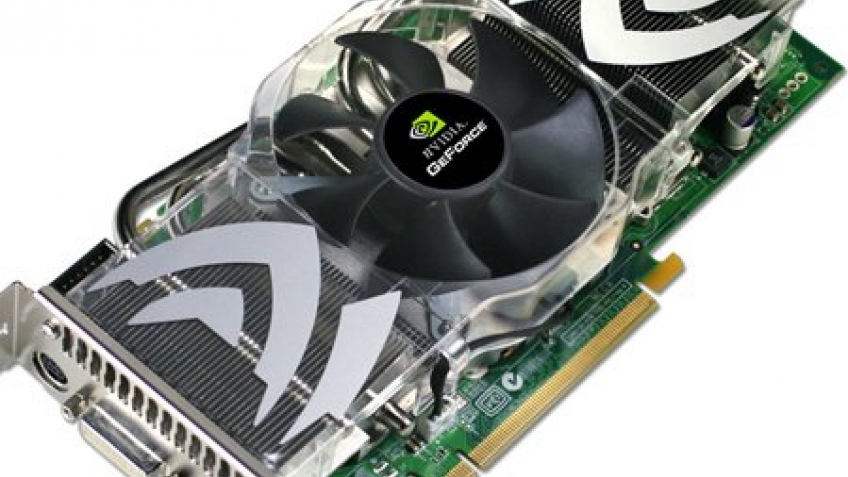 7 7 |
| Radeon X1800 XL | 500 | 16 | 8000 | 16 | 8000 | 1000 | 256 | 32.0 |
| Radeon X1800 XT | 625 | 16 | 10000 | 16 | 10000 | 1500 | 256 | 48. 0 0 |
| Radeon X1900 XT | 625 | 16 | 10000 | 16 | 10000 | 1450 | 256 | 46.4 |
| GeForce 7800 GTX | 430 | 16 | 6880 | 24 | 10320 | 1200 | 256 | 38. 4 4 |
| Radeon X1900 XTX | 650 | 16 | 10400 | 16 | 10400 | 1550 | 256 | 49.6 |
| Radeon X1950 XTX | 650 | 16 | 10400 | 16 | 10400 | 2000 | 256 | 64.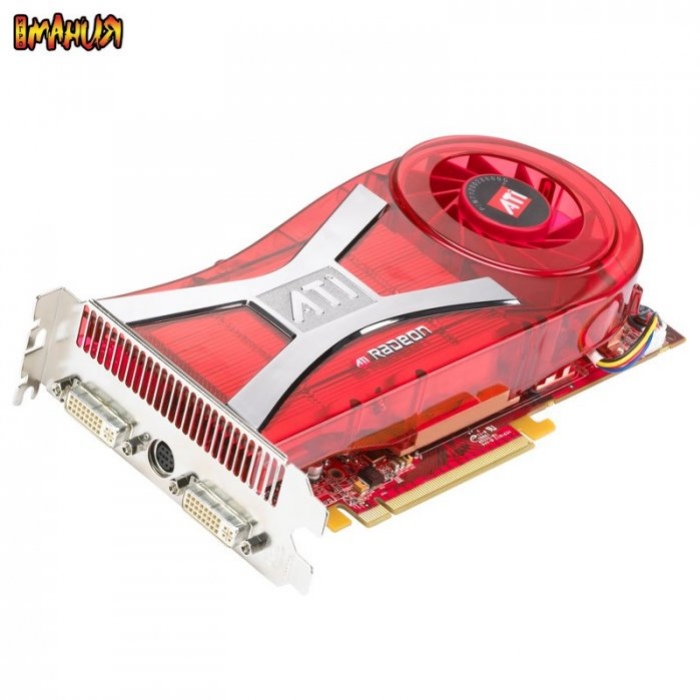 0 0 |
| GeForce 7900 GT | 450 | 16 | 7200 | 24 | 10800 | 1320 | 256 | 42.2 |
| GeForce 7800 GTX 512 | 550 | 16 | 8800 | 24 | 13200 | 1700 | 256 | 54.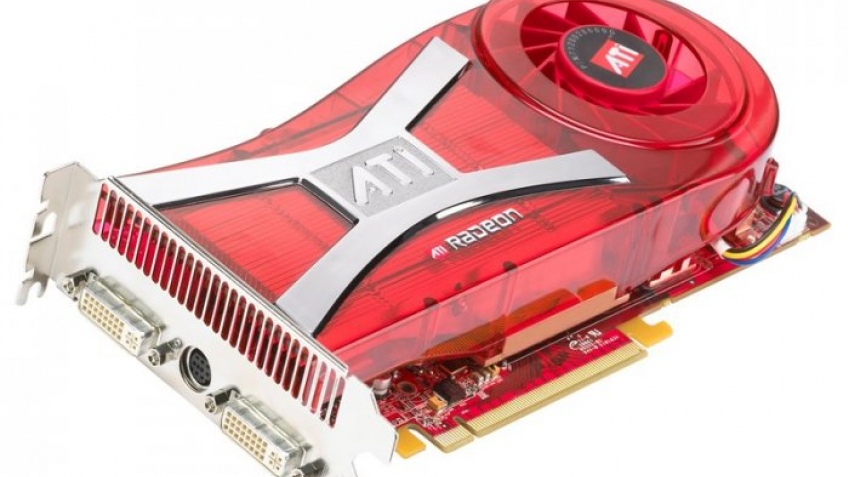 4 4 |
| GeForce 7900 GTX | 650 | 16 | 10400 | 24 | 15600 | 1600 | 256 | 51.2 |
| GeForce 7950 GX2 | 2 * 500 | 32 | 16000 | 48 | 24000 | 1200 | 2 * 256 | 76.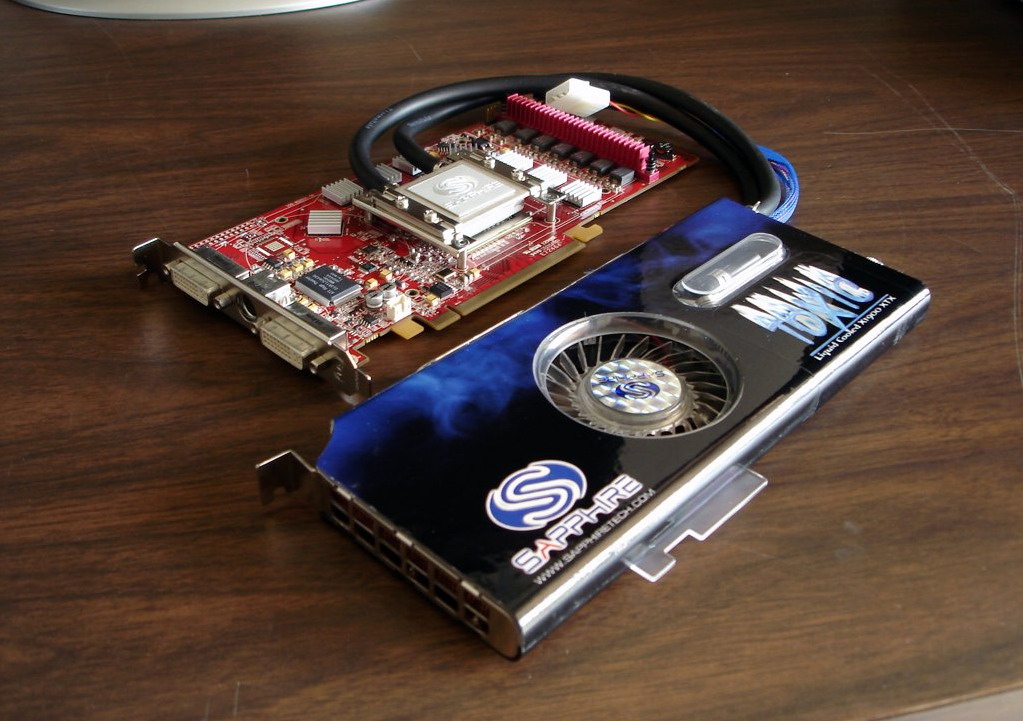 8 8 |
The Radeon X1900 XT 256MB has the same basic specs as the 512MB version, save for memory size. That puts it in a very respectable place. The X1950 XTX, meanwhile, has a tremendous memory bandwidth advantage on everything but the “SLI on a stick” dual-GPU GeForce 7950 GX2.
How do these numbers translate into performance on synthetic fill rate benchmarks?
The X1950 XTX’s faster RAM helps it make big gains over the Radeon X1900 XTX in the single-textured fill rate test, despite having the same GPU clock frequency. Once we get into multitextured pixels, though, that advantage is muted.
Of course, these numbers aren’t destiny in real-world applications. The GeForce cards do especially well here thanks to their ability to use one of the ALUs in each of their pixel shader processors for texturing. The R580-derived cards, meanwhile, have 16 dedicated texture address units and 48 dedicated pixel shader processors at their disposal. In other words, the two architectures allocate their resources quite differently, and the implications are difficult to predict with a simple fill rate test.
Quake 4
In order to make sure we pushed the video cards as hard as possible, we enabled Quake 4’s multiprocessor support before testing.
The Radeon X1950 XTX’s faster memory doesn’t seem to help very much here, since it’s barely any faster than the Radeon X1900 XTX. The Radeon X1900 XT 256MB, though, asserts itself by beating out the GeForce 7900 GT across the board.
Notice one other thing about the results, which is how small the spread is between the Radeon X1900 XT 256MB, the Radeon X1900 XTX, and the Radeon X1950 XTX. In Quake 4, all of them run slower than I’d like at 2048×1536, and all of them hit acceptable frame rates at 1600×1200. That’s a dynamic to consider as we look through the rest of the results.
F.E.A.R.
We’ve used FRAPS to play through a sequence in F.E.A.R. in the past, but this time around, we’re using the game’s built-in “test settings” benchmark for a quick, repeatable comparison.
Not only does the X1900 XT 256MB easily surpass the GeForce 7900 GT here, but it also gives the 7900 GTX a run for its money. The X1950 XT is clearly faster than the GTX, and it gains more of an edge on the X1900 XTX in this game.
The X1950 XT is clearly faster than the GTX, and it gains more of an edge on the X1900 XTX in this game.
The line graphs really illustrate the wickedness of that problem with performance scaling on the Radeon X1950 CrossFire setup at 1280×960. I’m not sure what the story is here. I ran these numbers multiple times, and the behavior was consistent. Must be some kind of driver quirk or something. Notice, also, that the low frame rates on the CrossFire rig aren’t much higher than they are with a single X1950 XTX.
Half-Life 2: Episode One
The Source game engine uses an integer data format for its high-dynamic-range rendering, which allows all of the cards here to combine HDR rendering with 4X antialiasing.
The Radeons have quite the edge in Half-Life 2: Episode Oneso much so that the X1900 XT 256MB outdoes the GeForce 7900 GTX.
The Elder Scrolls IV: Oblivion
We tested Oblivion by manually playing through a specific point in the game five times while recording frame rates using the FRAPS utility. Each gameplay sequence lasted 60 seconds. This method has the advantage of simulating real gameplay quite closely, but it comes at the expense of precise repeatability. We believe five sample sessions are sufficient to get reasonably consistent and trustworthy results. In addition to average frame rates, we’ve included the low frames rates, because those tend to reflect the user experience in performance-critical situations. In order to diminish the effect of outliers, we’ve reported the median of the five low frame rates we encountered.
Each gameplay sequence lasted 60 seconds. This method has the advantage of simulating real gameplay quite closely, but it comes at the expense of precise repeatability. We believe five sample sessions are sufficient to get reasonably consistent and trustworthy results. In addition to average frame rates, we’ve included the low frames rates, because those tend to reflect the user experience in performance-critical situations. In order to diminish the effect of outliers, we’ve reported the median of the five low frame rates we encountered.
We set Oblivion’s graphical quality settings to “Ultra High.” The screen resolution was set to 1600×1200 resolution, with HDR lighting enabled. 16X anisotropic filtering was forced on via the cards’ driver control panels.
The GeForce 7900 GTX and Radeon X1950 XTX are neck and neck here, while the Radeon X1900 XT 256MB continues to outperform the GeForce 7900 GT. I should mention, though, that there was a clear visual difference in this game between the 16X anisotropic texturing filtering modes offered by the two brands of cards.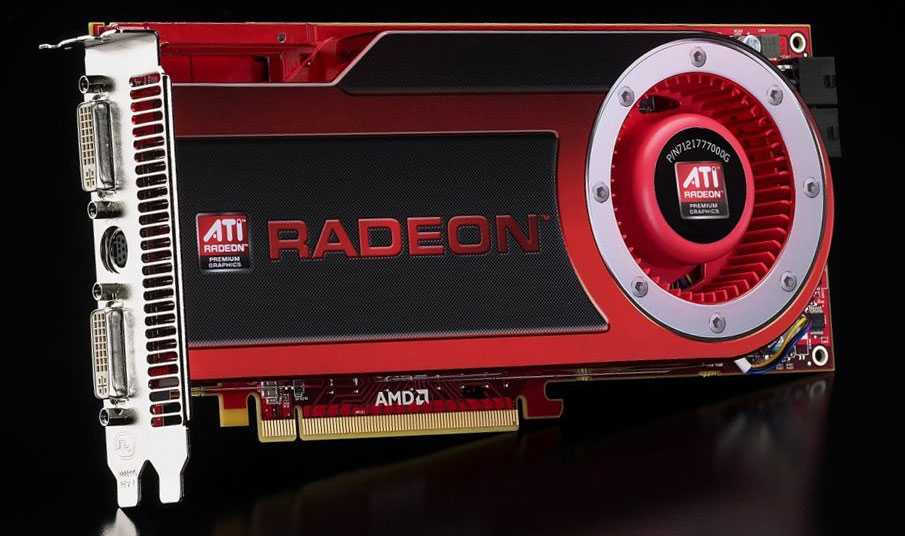 The Nvidia cards showed lots of high-frequency noise at certain mip levels and on mip-map boundaries, particularly in the cobblestone texture on the ground. The ATI cards did a much better job of presenting a sharp image without pixel shimmer, moire, or crawling. Frame rates also felt subjectively smoother on the ATI cards, especially during the first of our five runs through this sequence.
The Nvidia cards showed lots of high-frequency noise at certain mip levels and on mip-map boundaries, particularly in the cobblestone texture on the ground. The ATI cards did a much better job of presenting a sharp image without pixel shimmer, moire, or crawling. Frame rates also felt subjectively smoother on the ATI cards, especially during the first of our five runs through this sequence.
Ghost Recon Advanced Warfighter
We tested GRAW with FRAPS, as well. We cranked all of the quality settings for this game, with the exception of antialiasing. However, the game doesn’t allow cards with 256MB of memory to run with its highest texture quality setting, so the GeForce 7900 GT and Radeon X1900 XT cards were both running at the game’s “Medium” texture quality.
It’s a toss-up between the Radeon X1950 XTX and the GeForce 7900 GTX. In both single-card and multi-GPU configs, the 7900 GTX produces higher average frame rates, but the X1950 XTX achieves higher minimum frame rates. The X1900 XT 256MB, meanwhile, rolls on.
The X1900 XT 256MB, meanwhile, rolls on.
3DMark06
I’ve included scores for the Radeon X1900 XTX CrossFire rig below, despite the fact that we saw big problems with visual artifacts in graphics tests three and four of 3DMark06. The CrossFire system’s performance also didn’t scale as well as expected from one card to two, and I suspect the visual artifacts played a part in that. I was able to confirm that the problem wasn’t confined to the Radeon X1950 CrossFire setup by trying a Radeon X1900 CrossFire rig, which exhibited the same problems. I suspect some sort of driver problem or a mild incompatibility with our Intel D975XBX motherboard. We’re working with ATI to find a resolution, and we’ll update the scores here once we have one.
Update: We were able to overcome the CrossFire issue by switching to an Asus P5W DH motherboard. On that board, the Radeon X1950 CrossFire system executed 3DMark06 tests three and four without any problems, and the overall 3DMark score is higher as a result. The updated graphs are now in the article below.
The updated graphs are now in the article below.
The Radeon X1950 XTX’s extra memory bandwidth allows it to open up a slim but decisive lead over the GeForce 7900 GTX here. At the same time, the Radeon X1900 XT 256MB demonstrates that it has the GeForce 7900 GT outclassed.
3DMark’s quick vertex and pixel shader tests don’t reveal much new to us, but we’ve included them for the sake of completeness.
Power consumption
We measured total system power consumption at the wall socket using a watt meter. The monitor was plugged into a separate outlet, so its power draw was not part of our measurement. We tested all of the video cards using the Asus P5N32-SLI SE Deluxe motherboard, save for the CrossFire system, which required a different chipset. For that system, we used an Intel D975XBX motherboard.
The idle measurements were taken at the Windows desktop. The cards were tested under load running Oblivion using the game’s Ultra Quality setting at 1600×1200 resolution with 16X anisotropic filtering.
Power consumption at idle is quite good for all of the single-GPU systems. When running a game, though, the ATI cards simply require more power. The Radeon X1900 XT pulls 75W more under load than the GeForce 7900 GT, and the Radeon X1950 XTX out-pulls the GeForce 7900 GTX by a similar margin. The one bright spot for ATI here is the fact that the Radeon X1950 XTX draws 17W less power than the X1900 XTX. Apparently, the combination of R580+ and GDD4 memory has the potential to reduce power draw somewhat.
One reason that the power draw is relatively low for the X1950 CrossFire system at idle, by the way, is the fact that the Intel motherboard supports the Core 2 Duo processor’s C1E enhanced halt state, which cuts the CPU clock speed at idle. The P5N32-SLI SE Deluxe doesn’t appear to support C1E halt, so the CPU draws more power when sitting idle on that board.
Conclusions
See, like I said, remixes can bring good things. In this case, we have a new top-end Radeon X1950 XTX that furthers ATI’s claim on the title of the fastest single-GPU graphics card around, and does so without costing any more than the product it replaces.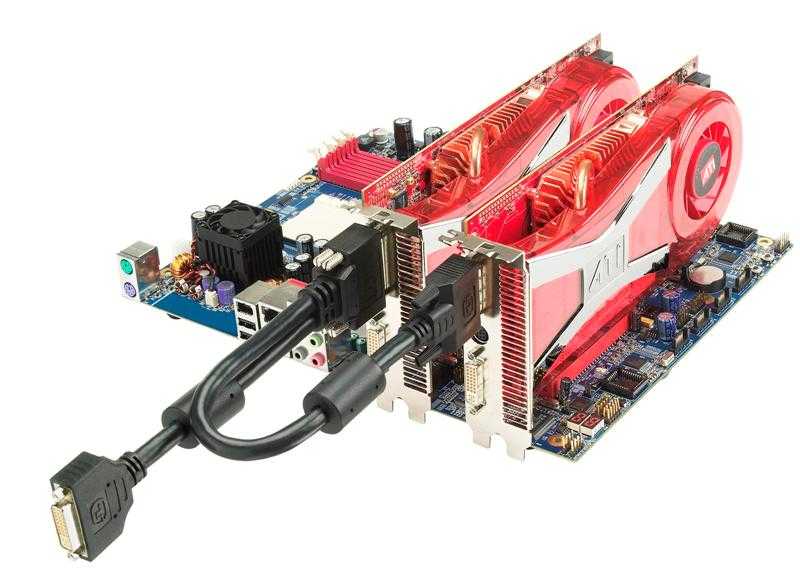 I’m not sure I can say definitively that the Radeon X1950 XTX is faster than the GeForce 7900 GTXthat depends on the situation. You will have to live with higher power consumption if you choose the Radeon, but ATI has worked to mitigate the worst effects of that fact with its new cooler. The X1950 XTX also has a few feature advantages in its corner, including the ability to handle floating-point texture filtering for high-dynamic-range rendering in concert with antialiasing and a superior default algorithm for anisotropic filtering. That’s a pretty good combination.
I’m not sure I can say definitively that the Radeon X1950 XTX is faster than the GeForce 7900 GTXthat depends on the situation. You will have to live with higher power consumption if you choose the Radeon, but ATI has worked to mitigate the worst effects of that fact with its new cooler. The X1950 XTX also has a few feature advantages in its corner, including the ability to handle floating-point texture filtering for high-dynamic-range rendering in concert with antialiasing and a superior default algorithm for anisotropic filtering. That’s a pretty good combination.
Meanwhile, with the 256MB version of the Radeon X1900 XT, ATI has captured our full attention. The X1900 XT 256MB clearly has the GeForce 7900 GT running at Nvidia’s stock speeds beaten on performance. We’ve seen the now almost-ubiquitous “overclocked in the box” versions of the GeForce 7900 GT deliver somewhat better performance, but they’re not likely to make up the gap entirely. As I said early on, the X1900 XT 256MB’s biggest liability is the lack of a well-matched CrossFire Edition card for it. If you hope to upgrade to multiple GPUs, you may be better off with a 7900 GT.
If you hope to upgrade to multiple GPUs, you may be better off with a 7900 GT.
Still, the X1900 XT 256MB is so good, it raises all sorts of interesting questions. If ATI and its board partners can deliver this thing at the promised $279 price point, we’ll have a new favorite graphics card to recommend. In fact, given the performance we’ve seen out of the X1900 XT 256MB, one wonders why anyone should pay any more for a graphics card. Yes, the X1950 XTX is certainly faster, but it’s not in an entirely different class or capable of offering playable framerates in many resolutions where the X1900 XT 256MB can’t. But then you probably knew that the high-end card wasn’t exactly at the sweet spot for price and performance.
Now the big question is: how will Nvidia respond? These products won’t hit store shelves for three weeks, and that’s a veritable eternity in PC graphics. Remixes don’t take long to paste together, so we may be hearing another new track or two soon in the thump-thump-thump of progress.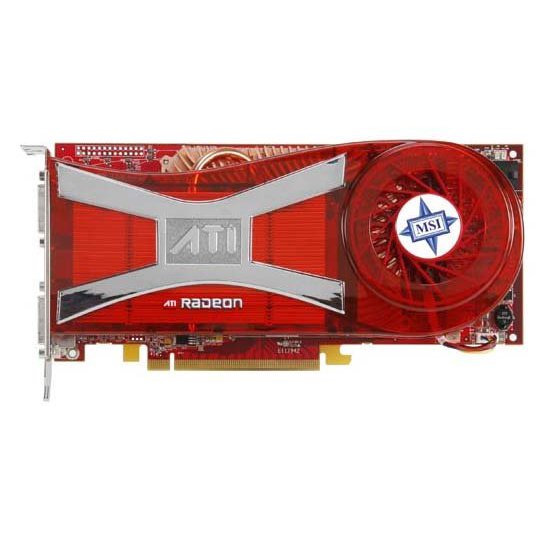
Choosing the best video card Radeon X1950 Pro from Gecube, ASUS and HIS models / Video cards
Preface
A little over a month has passed since the announcement of the new video processor ATI RV570 (Radeon X1950 Pro). Last time, we conducted a preliminary test of the video card Radeon X1950 Pro manufactured by TUL (trademark — PowerColor), and compared it with the closest «classmates». During this time, all ATI partners have mastered the production of video cards based on the X1950 Pro and offered their own options, but we didn’t even expect that the variety of characteristics could vary so much.
Today we will get acquainted with the video cards Radeon X1950 Pro from three well-known manufacturers and try to find out their strengths and weaknesses. So let’s get started. And we’ll start with…
GeCube X1950 Pro
As the main character on the front side of the packaging of the GeCube X1950 Pro video card, there is a permanent red-haired beast of ATI named Ruby, with an invariable sword in her hands. Numerous labels report standard technologies for this video card — AVIVO, CrossFire, HDTV and others. From here we see that on the GeCube X19 video card50 Pro comes with 256MB of DDR3 video memory and is RoHS compliant.
Numerous labels report standard technologies for this video card — AVIVO, CrossFire, HDTV and others. From here we see that on the GeCube X19 video card50 Pro comes with 256MB of DDR3 video memory and is RoHS compliant.
The reverse side of the package tells us a more detailed description of the capabilities of the video card, and even shows the intended connection scheme to numerous type display devices. It also talks about a single-slot cooling system with intelligent inclinations — the ability to adjust the cooler speed depending on the load on the GPU. And here comes the overlay. Utilities for monitoring and managing video card parameters, such as RivaTuner and ATITool, could not detect the temperature monitoring unit and the cooler speed controller on the video card.
Package Included:
- user manual
- DVI/D-SUB adapter
- adapter add. nutrition
- HDTV-out adapter
- S-Video cable
- driver disc
- Power DVD 6 (Dual Channel)
Unfortunately, we couldn’t find the connecting bridge, which is intended for connecting X1950 Pro video cards in CrossFire.
Video card GeCube X1950 Pro looks compact and stylish. Interestingly, on the video card itself, in contrast to the packaging, the GeCube logo is nowhere to be seen. Even the sticker on the cooler, which is the most frequently modified, bears the ATI logo. At first glance, you can see that the PCB design is different from what we saw in PowerColor. The power connector is located in a different place, and the power system itself does not look in the spirit of modern trends — electrolytic capacitors and powerful chokes.
The reverse side of the video card surprises with the presence of a plate that covers almost the entire surface of the printed circuit board. But, as it turns out, there are no memory chips under the plate, and this stylish little thing is designed to cool just a couple of power elements, which can be clearly seen from the photo below.
Here you can see the sole of the cooler with thermal rubber glued on it, as well as the reverse side of the copper plate placed on the back side of the PCB.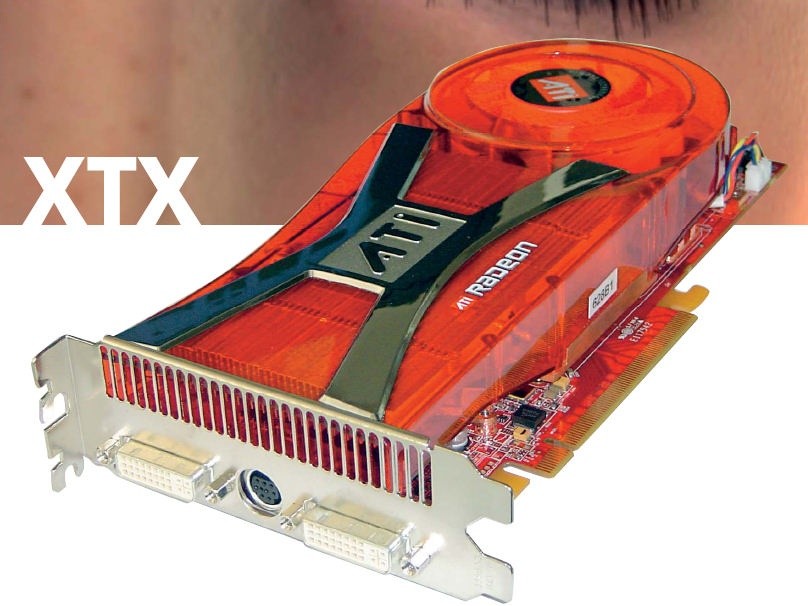 Thermal pads of lilac color are designed to cool two pairs of power elements, and this is the end of the plate’s function. Everything else is for beauty. The cooler rotates at a decent speed and, unfortunately, the noise is quite annoying even if the video card is installed in a closed case.
Thermal pads of lilac color are designed to cool two pairs of power elements, and this is the end of the plate’s function. Everything else is for beauty. The cooler rotates at a decent speed and, unfortunately, the noise is quite annoying even if the video card is installed in a closed case.
With the cooler removed, the PCB surface looks empty in places. Interestingly, GeCube’s PCB variant does not provide space for the Rage Theater chip, which provides analog video capture functions.
The video processor itself looks exactly the same as the RV570 we have already seen on the board from PowerColor. Is that the inscription RV570 disappeared. The nominal GPU frequency on the GeCube X1950 Pro board is 575 MHz.
The board has eight Samsung video memory chips with an access time of 1.4 ns, which corresponds to the nominal frequency of 1400 MHz. The nominal frequency of the video memory is 1380 MHz DDR. The total amount of video memory, as already mentioned, is 256 MB.
The nominal frequency of the video memory is 1380 MHz DDR. The total amount of video memory, as already mentioned, is 256 MB.
ASUS EAX1950 Pro
The EAX1950 Pro video card from ASUS continues our acquaintance with the variety of X1950 Pro models.
This time, in the packaging design, it was decided to abandon the many colorful labels. Only the amount of installed video memory is mentioned — 256 MB, HDCP support and proprietary video image enhancement technology called Splendid.
The reverse side of the package contains a rather concise description of the technical capabilities of the video card and is more devoted to ASUS proprietary video technologies.
Contents of delivery:
- user manual
- DVI/D-SUB adapter
- adapter add. nutrition
- HDTV-out adapter
- driver disc
- multilingual user manual disc.

- CD case.
As in the case with the video card from GeCube, for some reason this kit lacks a connecting bridge for CrossFire.
The ASUS EAX1950 Pro video card is equipped with a stylish white cooler with a heat pipe. The black mesh adds a special charm to the cooler. Although at first glance it seems that air from the turbine should pass through it, it has a purely decorative purpose.
The cooler is built according to a quite typical scheme — an aluminum base with protrusions for cooling memory chips and power elements (a narrow protrusion near the impeller), plus a copper insert for the video processor, from which a heat pipe goes to the top of the cooling fins. Everything is fine with the monitoring of the ASUS EAX1950 Pro video card. Normally, the cooler rotates at a frequency of about 1600 rpm, and even under load, the speed does not increase. The temperature of the GPU under load in this mode reaches about 70 °. Needless to say, with such low speeds, the noise produced by the cooler is simply absent.
The temperature of the GPU under load in this mode reaches about 70 °. Needless to say, with such low speeds, the noise produced by the cooler is simply absent.
With the cooler removed, it becomes obvious that the used PCB is exactly the same as the one we saw on the PowerColor video card. There is a place for a video capture chip, but the chip itself is not soldered.
The reverse side of the PCB contains many small elements, but otherwise nothing particularly interesting.
The GPU is no different from its counterparts. Utilities report that its frequency on the video card from ASUS EAX1950 Pro is equal to 580 MHz, which exactly corresponds to the ATI recommendations.
The total memory capacity of 256 MB is provided by eight chips made by Samsung with access time of 1.4 ns, which corresponds to the nominal frequency of 1400 MHz DDR. The memory on the ASUS EAX1950 Pro video card works at this frequency.
The memory on the ASUS EAX1950 Pro video card works at this frequency.
HIS X1950 Pro IceQ3
The next number of our program is a product from HIS.
The stylish black box does well without fairy tale characters on the front side, but it is replete with numerous labels designed to emphasize the merits of the product. The main one, according to the manufacturer, is the IceQ3 cooling system developed by Arctic Cooling.
The reverse side of the box is devoted to the features and benefits of the cooling system, but through the figured cutout in the cardboard, you can directly admire the cooler of the HIS X19 video card50 Pro IceQ3.
Equipment:
- user manual
- DVI/D-SUB adapter 2 pcs.
- adapter add. nutrition
- HDTV-out adapter
- VIVO adapter
- S-Video cable
- CrossFire bridge
- bracket for the rear panel of the case.

- driver disc
- disc with PowerDVD 7
- bonus disc — games, utilities and applications for working with DVD
- FlatOut game on two discs.
As you can see, the words Platinum Pack in the description of the video card are quite true. The package bundle of the HIS X1950 Pro IceQ3 video card pleasantly surprises with the presence of a disk with the most popular PowerDVD software DVD player of the latest, seventh version, as well as the presence of a bridge for combining two such video cards into a CrossFire bundle!
We have already seen IceQ3 cooling system on HIS products and it has proved its high efficiency in cooling even such a hot graphics card as Radeon X1950XTX. The kit includes a large cooler that covers almost the entire surface of the PCB, as well as an L-shaped heatsink for video memory chips. Of course, the design of the video card turned out to be two-slot, with the release of hot air outside the system unit.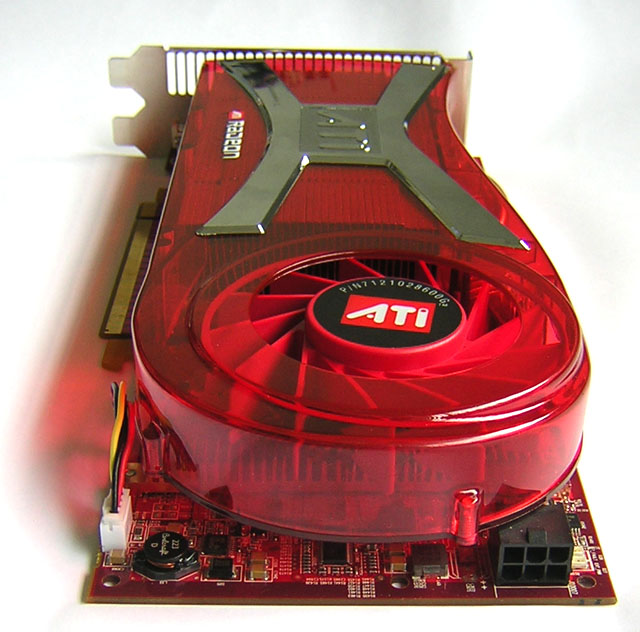
The massive heatsink is entirely copper, equipped with a heat pipe and a protective frame to prevent chipping of the GPU chip. Under the impeller there are slots for cooling the radiator located above the power elements at the back of the board. The cooler itself is completely silent.
As you can see, externally the PCB is completely identical to the PCB from ASUS. The difference lies only in a separate heatsink for the power elements of the power supply system and the presence of a video capture chip.
The reverse side of the PCB, as expected, does not carry anything new — all the same «reference».
Externally, the GPU on the HIS X1950 Pro IceQ3 video card is no different from its own kind, but its operating frequency was increased from 580 to 635 MHz (according to information from the utilities), although the label on the front of the package told us that the frequency was only 620 MHz. Rather, the label is old, and the GPU frequency was decided to be raised a little more. Be that as it may, we will continue to operate with the GPU frequency for HIS X1950 Pro IceQ3 exactly at 635 MHz.
Rather, the label is old, and the GPU frequency was decided to be raised a little more. Be that as it may, we will continue to operate with the GPU frequency for HIS X1950 Pro IceQ3 exactly at 635 MHz.
As for the video memory, just like on the previous two video cards, we see the same 8 chips made by Samsung and the access time is 1.4 ns. However, on the HIS X1950 Pro IceQ3 video card, the frequency of the video memory is also somewhat overstated and amounts to 1485 MHz DDR instead of the «required» 1400 MHz DDR.
Acceleration
Let’s start with the bad news — none of the video cards mentioned in this review allowed changing the frequency of the video memory. It’s to change. Video memory from Samsung has always been distinguished by excellent overclocking potential, but in this case, the blocking is somewhere on a different level. It’s not that overclocking failed — even lowering the frequency of the video memory led to the freezing of the entire system. However, the video card from HIS uses «non-standard» frequencies. This suggests that in order to overclock the memory frequency, it is necessary to use the BIOS editors of the video card. This method, if possible, significantly complicates the overclocking procedure and requires considerable time to study this issue. That’s why we decided not to overclock video memory on X19 cards for the time being.50pro.
However, the video card from HIS uses «non-standard» frequencies. This suggests that in order to overclock the memory frequency, it is necessary to use the BIOS editors of the video card. This method, if possible, significantly complicates the overclocking procedure and requires considerable time to study this issue. That’s why we decided not to overclock video memory on X19 cards for the time being.50pro.
As for the overclocking of video processors, the video card from GeCube made it possible to overclock the GPU to a frequency of 635 MHz. That is — up to the «regular» frequency of the GPU on the video card from HIS. We can say the following about the X1950 Pro video cards from HIS and ASUS, equipped with efficient cooling systems — by increasing the cooler rotation speed to the maximum, they allow you to overclock the GPU up to 670 MHz. But at this frequency, during long work under load, freezes were still encountered, although the GPU temperature did not exceed 70 °. At a frequency of 650 MHz, the stability was somewhat higher, but the high noise level from the coolers may seem unacceptable to many.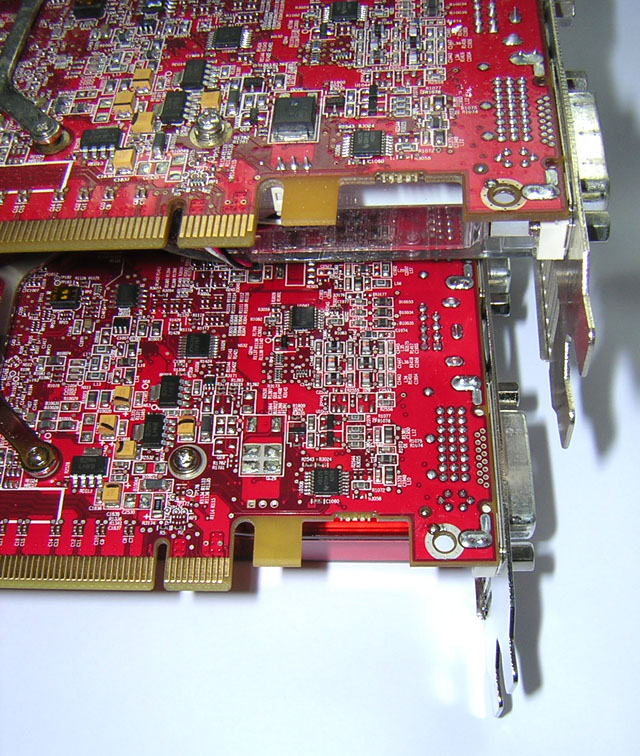 Therefore, we decided to test video cards at nominal frequencies, and the results shown by the HIS X19 video card50 Pro, give an idea of the overclocking potential of the rest of the participants.
Therefore, we decided to test video cards at nominal frequencies, and the results shown by the HIS X19 video card50 Pro, give an idea of the overclocking potential of the rest of the participants.
ATI Catalyst 6.11 drivers were used for testing.
Terminals
Actually, there is no great need to comment on the test results, everything is already obvious. Video cards took their places according to clock frequencies. The first place rightfully belongs to HIS X1950 Pro IceQ3, the second place is taken by the video card from ASUS, which is ahead of the product from GeCube due to slightly higher video memory frequency. However, the difference in results is so minimal that you will hardly understand which of these video cards is installed in your system unit “blindly”, by the game.
Let’s summarize.
Video card GeCube X1950 Pro stands out for its high noise level, despite the claimed ability to adjust the cooler speed. We hope that this is only a shortcoming of the specimen that has been in our laboratory, and this shortcoming will be eliminated in future revisions.
We hope that this is only a shortcoming of the specimen that has been in our laboratory, and this shortcoming will be eliminated in future revisions.
The ASUS X1950 Pro video card pleases with an effective silent cooler, overclocks well and can be recommended to all buyers who decide to purchase a product based on the X1950 Pro.
Video card HIS X1950 Pro IceQ3 seems to be the most preferred solution based on the X1950 Pro due to efficient cooling, increased frequencies and excellent packaging, and therefore receives the Editors’ Choice award.
122-mm self-propelled howitzer 2S1 «Gvozdika». USSR
In the early 1960s, Soviet military experts recognized the fallacy of the concept that existed at that time in the Armed Forces, according to which most of the tasks of fire destruction of the enemy during the battle were assigned to units armed with tactical and operational-tactical missile systems. Within the framework of this theory, it was assumed that the results of missile strikes, including nuclear ones, would be widely used in the interests of mobile combined arms formations, units and even subunits, which in turn led to a radical reduction in barrel artillery formations in the organization structure of combined arms formations, formations and units. As a result, in the middle of 19In the 60s, when the ground forces returned to the traditional organization of ground artillery, many artillery regiments and divisions had to be equipped with artillery pieces made during the Great Patriotic War, with significant barrel wear and the height of charging chambers. The development of self-propelled armored artillery systems capable of supporting the battle of tank and motorized rifle units and subunits with fire from closed firing positions was practically not carried out in the post-war period in the Soviet Union, while in 19In the 1950s and early 1960s, the armies of NATO member states developed and adopted new self-propelled guns for all military structures. In the USSR, the development of preliminary designs for new self-propelled field artillery installations (120-mm self-propelled mortars, 122-mm and 152-mm self-propelled howitzers) was started at VNII-100 (a branch of VNIITrasnmash) only in 1965. July 4, 1967, in accordance with the Decree of the Council of Ministers of the USSR in OKB-9 of the Uralmash plant (Sverdlovsk) under the leadership of V.
A. Golubeva began the preliminary development of the artillery unit of the new 122-mm self-propelled howitzer in two versions D-11 and D-12. The artillery unit was created on the basis of the 122-mm D-30 towed howitzer and also retained the internal structure of the barrel, ballistics and ammunition. At the same time, at the Kharkov Tractor Plant named after. Sergo Ordzhonikidze (KhTZ) began work on the creation of a chassis project for a new self-propelled guns (factory index — “product 10”) based on the MT-LB multi-purpose armored tractor (MT-LBU), the design buoyancy margin of which was 20%.
General management of the work on the creation of a new ACS was carried out by the chief designer of KhTZ A.F. Belousov. According to the test results, a variant of the D-12 howitzer was chosen, which, after all the improvements to this model, received the designation D-32 (GRAU index — product 2A31). In 1968, the fully developed project documentation for the D-32 howitzer was transferred from OKB-9 to the KhTZ design bureau, where since that time all work on the self-propelled howitzer has been carried out. Due to insufficient stability, as well as increased loads, the undercarriage of the “product 10” chassis was lengthened and received one more, seventh, additional road wheel. An experimental series of four copies was submitted for testing in August 1969 years old. State tests revealed a serious defect: when firing, a strong gas contamination of the fighting compartment arose. To eliminate it, a more powerful barrel ejector and sleeves with improved obturation were used. In September 1970, the gun was adopted by the ground forces of the Soviet Army under the name «122-mm self-propelled howitzer 2S1» Gvozdika «». It was a floating artillery installation with circular fire, mounted on a tracked lightly armored chassis, and was intended to destroy and suppress manpower and infantry firepower, destroy field-type fortifications, make passages in minefields and wire obstacles, fight artillery, mortars and armored vehicles enemy.
In 1972, serial production of 2S1 self-propelled howitzers began at the Kharkov Tractor Plant. Initially, artillery battalions of tank and motorized rifle regiments on infantry fighting vehicles were equipped with 2S1 howitzers. Each division included 18 self-propelled guns, and their number in divisions of the first echelon could reach 54 units. In addition to the ground forces, 2S1 howitzers entered service with the Marine Corps of the Navy. The body of the Gvozdika self-propelled guns was also used to create special reconnaissance vehicles, fire control, radiation and chemical reconnaissance, radar surveillance, demining and command vehicles, and subsequently, on the basis of the 2S1 howitzer, the UR-77 demining unit was created and mass-produced.
The sealed welded hull of the SAU 2S1 had bulletproof armor (the maximum thickness of the steel plates reached 20 mm) and ensured swimming through water obstacles. The control compartment and the engine compartment were located in the front of the hull, and the fighting compartment was in the middle and aft parts of the hull, as well as in the turret. An ammunition rack was located in the fighting compartment. The driver’s seat is located in the control compartment (separated from the power compartment by sealed partitions), and three crew members were accommodated in the tower: in front of the left — the gunner, behind him — the commander and to the right of the gun — the loader. In the walls of both sides of the hull, three fuel tanks connected in series with a total capacity of 550 liters are mounted.
Enclosed circular turret, mounted at the rear of the machine, rotated by electric or manual drives. On the roof of the tower there is a rotating commander’s cupola with a hatch, equipped with two periscope observation devices and a combined observation device. The main armament of the self-propelled guns 2S1 «Gvozdika» consists of a 122-mm howitzer D-32, located in the tower. The howitzer barrel consists of a monoblock tube, a breech, a clutch, an ejector device and a two-chamber muzzle brake. The shutter is vertical wedge with semi-automatic mechanical (copy) type. The lifting mechanism is sectorial with a manual drive. Guidance of the gun in the vertical plane is carried out in the range of angles from -3° to +70°. Rollback brake hydraulic spindle type, knurler pneumatic. The recoil brake and knurler cylinders are fixed in the breech and roll back along with the barrel. The barrel is balanced by a push-type pneumatic balancing mechanism. To protect the crew of the self-propelled guns from blows by the recoiling parts of the howitzer during firing, its breech is separated from the crew by a fixed and folding fence. The latter, hinged to the shields of the fixed fence, serves as the installation site for the ramming mechanism and the spent cartridge case reflector. To facilitate the work of the 2A31 loading gun, it is equipped with an electromechanical type ramming mechanism designed for separate ramming of the projectile and the loaded cartridge case into the barrel chamber after placing them on the rammer tray. When firing shells stored on the ground, they are fed into the fighting compartment using a transport device through a large aft door.
The device is a tray installed in the aft part of the hull on transverse rails. When loaded with a projectile or charge, under the action of their mass, the tray moves forward into the loading zone, while compressing the return spring. After unloading, the released spring returns the tray to its original position. The 2S1 Gvozdika self-propelled howitzer is equipped with a PG-2 periscope sight (index 10P40), designed for both indirect and direct fire, and a direct-fire optical sight OP5-37. The 2S1 self-propelled howitzer can fire all types of ammunition from the D-30 towed howitzer. The howitzer’s transportable ammunition load includes three types of separate-sleeve-loading rounds: 35 high-explosive fragmentation and 5 smoke and armor-piercing HEAT shells with stabilizing plumage. Shooting with a cumulative rotating projectile BP-1 is carried out with a special charge weighing 3.1 kg, the initial speed is 740 m/s, and the firing range is 2000 m.
Normal armor penetration when firing this projectile is 180 mm, at an angle of 60° — 150 mm, at an angle of 30° — 80 mm, and the armor penetration does not depend on the firing range. The maximum firing range of a high-explosive fragmentation projectile was 15,300 meters. In the case of the use of active-rocket projectiles, the range of the shot increased to 21,900 meters. For the 2S1 howitzer, the Kitolov-2 laser-guided projectile was developed, which can hit all stationary and moving targets with a high degree of probability. The means of communication were — VHF radio R-123M and TPU R-124, installed on the ACS 2S1. The engine compartment is located in the front of the case. With a V-shaped 8-cylinder four-stroke liquid-cooled diesel engine YaMZ-238V with a power of 240 hp. blocked mechanical transmission. The undercarriage of the 2S1 Gvozdika self-propelled howitzer consists (in relation to one side) of: 7 rubber-coated road wheels (made of aluminum alloy), a front-mounted drive wheel with removable gear rims (lantern engagement), and a rear-mounted idler wheel. Two disks are welded between the hub and the outer ring with a rubber bandage of each roller, forming an internal air chamber, which increases the buoyancy of the machine.
Torsion suspension. Hydraulic shock absorbers of an automobile type interacted with the balancers of the first and last road wheels. The vertical travel of these road wheels was additionally regulated by spring buffers. The track tension mechanism was located inside the hull. The track tension was also adjusted from inside the machine. Tracks with rubber-metal joints had a width of 400 mm, but could be replaced with wider ones (670 mm) for increased cross-country ability in snow and wetlands.
Movement afloat is carried out by rewinding the tracks, while the ACS 2S1 developed a speed of 4.5 km/h. However, there were also a number of limitations. For example, the speed of the water flow should not exceed 0.6 m / s, and the height of the waves should not be higher than 150 mm. In addition, when overcoming water obstacles, there should be no more than 30 shots on board the ACS. Since the combat weight of the 2S1 Gvozdika did not exceed 16 tons, it could be transported by An-12, Il-76, An-124 military transport aircraft.
122-mm self-propelled howitzer 2S1 «Gvozdika» was widely used by units of the 40th Army from the Limited Contingent of Soviet Forces in Afghanistan, and also took part in almost all regional conflicts in the CIS in the 1990s. «Carnation» was actively used in both «Chechen» wars and in the course of antiterrorist operations in Chechnya. Despite the fact that by the mid-1990s this self-propelled gun was already considered obsolete, it still remains in service with the artillery units of the Russian Army. Currently, the Russian Armed Forces have about 2,500 122-mm self-propelled howitzers 2S1 Gvozdika.
JOHN DEERE 1950 tractors from Europe
ABC AEBI SCHMIDT AGCO ANTONIO CARRARO
TRX
TRX 8400
TTR
TTR 4400
ARBOS ARMATRAC
854 1054
BARREIROS BCS BELARUS BIZON BOBCAT
543
BUCHER Bolinder-Munktell Branson CARRARO
TTR
CASE IH
310 844 856 955 1056 1255 4210 5120 5130 5140 5150 7220 7250 CS
CS 86 CS 94 CS 100 CS 110 CS 120 CS 130 CS 150
CVX
CVX 120 CVX 125 CVX 130 CVX 150 CVX 160 CVX 170 CVX 175 CVX 195 CVX 220 CVX 230 CVX 1155 CVX 1170 CVX 1190 CVX 1195
Farmall
Farmall 55 Farmall 65 Farmall 75 Farmall 85 Farmall 95 Farmall 105 Farmall 115
International JX
JX 60 JX 90 JX 95 JX 1075 JX 1090
Luxxum
Luxxum 100 Luxxum 110 Luxxum 120
MX
MX 90 MX 100 MX 110 MX 135 MX 150 MX 170 MX 200 MX 230 MX 270 MX 285
MXM
MXM 130 MXM 155 MXM 175
MXU
MXU 100 MXU 110 MXU 115 MXU 125 MXU 135
Magnum
Magnum 235 Magnum 250 Magnum 280 Magnum 290 Magnum 310 Magnum 315 Magnum 335 Magnum 340 Magnum 380 Magnum 7250
Maxxum
Maxxum 110 Maxxum 115 Maxxum 125 Maxxum 130 Maxxum 135 Maxxum 140 Maxxum 150 Maxxum 5120 Maxxum 5130 Maxxum 5150
Optum
Optum 270 Optum 300
Puma
Puma 130 Puma 145 Puma 155 Puma 160 Puma 165 Puma 180 Puma 185 Puma 200 Puma 210 Puma 220 Puma 230 Puma 240 Puma CVX
Quadtrac
Quadtrac 485 Quadtrac 620
STX
STX 440
Vestrum
Vestrum 130
CATERPILLAR
D series
D5 D6 D7 D8
CHALLENGER
MT
MT 665 MT 765 MT 775 E MT 875
CHERY CLAAS
Ares
Ares 547 Ares 556 Ares 557 Ares 567 Ares 577 Ares 617 Ares 656 Ares 657 Ares 697 Ares 816 Ares 826 Ares 836
Arion
Arion 410 Arion 420 Arion 430 Arion 440 Arion 450 Arion 510 Arion 520 Arion 530 Arion 540 Arion 550 Arion 610 Arion 620 Arion 630 Arion 640 Arion 650 Arion 660
Atles
Atles 936
Atos
Atos 220 Atos 330
Axion
Axion 800 Axion 810 Axion 820 Axion 830 Axion 840 Axion 850 Axion 870 Axion 920 Axion 930 Axion 940 Axion 950 Axion 960
Axos
Axos 320 Axos 330 Axos 340
Celtis
Celtis 436 Celtis 446 Celtis 456
Challenger
Challenger 75
Elios
Elios 210 Elios 230
Nectis
Nectis 267
Nexos
Nexos 220 Nexos 230 Nexos 240
Xerion
Xerion 3300 Xerion 3800 Xerion 4000 Xerion 4500 Xerion 5000
DAVID BROWN
990 995
DELVANO DEUTZ-FAHR
Agrofarm
Agrofarm 420
Agroplus
Agroplus 85 Agroplus 87 Agroplus 95
Agrostar Agrotron
Agrotron 6. 20 Agrotron 85 Agrotron 120 Agrotron 150 Agrotron 165 Agrotron 260 Agrotron 265 Agrotron 630 Agrotron 6160 Agrotron 6190 Agrotron 7250 Agrotron K Agrotron L Agrotron M Agrotron TTV Agrotron X
DX series
DX 3.10 DX 3.50 DX 3.60 DX 3.70 DX 4.51 DX 6.10 DX 6.30 DX 6.31 DX 110 DX 120
D series
D 25 D 30 D 6507
HD KM K series
K 110
M series
M 640
DFSK
V21
EBRO
160
Eurotrac
F-series
F40
FARMTRAC FENDT
F-series
F380GT Farmer Favorit
Vario
Vario 211 Vario 309 Vario 312 Vario 313 Vario 409 Vario 410 Vario 412 Vario 516 Vario 712 Vario 714 Vario 716 Vario 718 Vario 720 Vario 722 Vario 724 Vario 818 Vario 820 Vario 8624 Vario 8222 Vario 924 Vario 926 Vario 930 Vario 933 Vario 936 Vario 939
Xylon
Xylon 524
FERRARI FIAT
Fiatagri G-series
FORD
2000 3000 4000 4110 4600 5000 5610 6610 6640 8210 8340 8630 8670 Dexta TW
TW15 TW25 TW30
FORDSON
Major
FORESTER FORTSCHRITT
T series
GIANT
D-series
D254
GOLDONI HAKO HANOMAG
C-series D-series
HERKULES HINOMOTO
C-series
C144 C174CX
E-series N-series
N239
HOLDER HOLMER
Terra
HONDA
TX
TX22
HURLIMANN
H-series
H 490 H 6165
IHC INTERNATIONAL
633 644 745 784 844 956 1055 1255
ISEKI
TA
TA215 TA235 TA247
TF TG TH TL
TL1900
TM
TM 3160 TM 3200
TS
TS1610
TU
TU 170 TU 180 TU 220 TU 318 TU 1400 TU 1500 TU 1900
TX
TX 1300 TX 1410 TX 1500
JANSEN JAR-MET JCB
Fastrac
Fastrac 1115 Fastrac 2135 Fastrac 2150 Fastrac 2170 Fastrac 3200 Fastrac 3220 Fastrac 3230 Fastrac 7230 Fastrac 8250
Workmax
JINMA
204 254
JOHN DEERE
KIOTI
CK
CK 22
CS
CS2610
DK RX
KNEGT KOMATSU
WB
WB97
KOTSCHENREUTHER
K-series
KUBOTA
A-series B-series
B1200 B1500 B1502 B2410 B2530 B5000 B5001 B7000 B7001
D-series K-series L-series
L1500 L4200
M series
M110GX M130X M135GX M4072 M8540 M9960
R-series X-series
X20
KÄRCHER LAMBORGHINI
R-series
R3 R6 R8
LANDINI
6-120 6-145 Landpower
Landpower 145 Landpower 165
Legend
Legend 130 Legend 165
Mistral
Mistral 50
Powerfarm Rex
Rex 110
Vision
LOVOL
TE
TE254
LS Lindner
Geotrac Lintrac
Lintrac 90 Lintrac 110
MAHINDRA MASSEY FERGUSON
35 65 135 165 240 265 275 285 290 390 399 590 690 698 699 2640 3060 3070 3080 3085 3645 4235 4245 4355 4708 5435 5445 5455 5460 5465 5610 5711 5713 6140 6255 6280 6455 6465 6475 6480 6480 6480 6480 6480 6480 6480 6480 6480 6480 6480 6480 6480 6480 6480 6480 6480 6480 6480 6480 6480 6480 6480 64805 7616 7618 7620 7624 7716 7718 7720 7722 7726 8160 8240 8250 8280 8480 8650 8670 8690 8727 8732 8737
MB MCCORMICK
MC
MC 100 MC 115 MC 135
MTX
MTX 110 MTX 150 MTX 165
XTX
XTX 145 XTX 185 XTX 200
MERCEDES-BENZ
MB
MITSUBISHI
D-series
D1550 D1850
MT
MT14 MT16 MT20 MT165 MT180 MT1401 MT2201
MOROOKA MULTICAR
M-series
M 30
NEW HOLLAND
D-series G-series
G170 G190 G210 G240
L-series M-series
M100 M115 M135 M160
NH
NH95
T-series
T3. 030 T4 T5 T6 T7 T8 T9
TD
TD80 TD90 TD95 TD5050
TG
TG 230 TG 285
TL
TL 80 TL 90 TL 100
TM
TM 115 TM 120 TM 130 TM 135 TM 140 TM 150 TM 155 TM 165
TN
TN60 TN75 TN85 TN90 TN95
TS
TS90 TS100 TS110 TS115 TS125 TS135
TVT
TVT 195
Nuffield PASQUALI PFANZELT PORSCHE PRONAR
5340
RABE RANSOMES REFORM RENAULT
Ares
Ares 550 Ares 566 Ares 610 Ares 640 Ares 710 Ares 715 Ares 826
Atles Celtis
Celtis 436
Ceres
Ceres 340
Ergos
Ergos 110 Ergos 446
Temis
Temis 550
SAME
Antares
Antares 110
Argon Buffalo Dorado
Dorado 70 Dorado 86 Dorado 90
Explorer Rubin
Rubin 135 Rubin 180
Silver
Silver 100 Silver 130
Solaris Virtus
SCHLUTTER SCHÄFFER SEKO SHIBAURA
SP SU SX
SIROMER
244E
SOLIS
20 26 50 75 90
SOMECA SONALIKA STEYR
9094 9105 CVT
CVT 6185 CVT 6220 CVT 6230
Kompakt
Kompakt 4075
Multi
Multi 4115
Profi
Profi 4110 Profi 6125 Profi CVT
STIGA STILL
R-series
R07
SUPER WALTER Silvatec TECNOMA TORO
Groundsmaster
TRIOLIET TYM
T273
UNIVERSAL
445
URSUS
1224 C385
VALMET
103 120 130 154 163 174 214 234 374 605 6300 6400 8050
VALPADANA VALTRA
A-series N-series
N93 N103 N121 N123
S-series
S274 S294 S354 S374
T-series
T130 T131 T151 T153 T160 T163 T174 T190 T191 T193 T202 T213 T214
VERSATILE VOLVO
BM
BM 800 BM 2650
VST Vredo
VT
YANMAR
AC AF
AF 16 AF 17 AF 220
B-series F-series
F5 F6 F7 F13 F15 F16 F145 F155 F180 F215 F220
FX
FX 20 FX 235 FX 265
KE
KE-3 KE-4
RS
RS 24
YM
YM1300 YM1500 YM1601
YTO ZETOR
7211 Forterra
Forterra 105
Major Proxima
ZOOMLION DMTZ KIROVETS
K
K 700
MTZ
82
HARVEST KhTZ
150
Show all
KhTZ-7 tractor: specifications, reviews, analogues50th to 1956 with a total of 48 thousand copies.
Photo: KhTZ-7 tractor
Content:
1. Purpose and design of
2. Technical characteristics of the power unit
3. Transmission
9. Advantages and disadvantages of
9 918 Price 6. Owner reviews
Purpose and design
It was based on advanced technical solutions for its time, which became the basis for the creation of more advanced machines of the DT-14 and DT-20 brands.
- The first domestic small-sized tractor was successfully operated in various sectors of the national economy, but to a greater extent was focused on the mechanization of the cultivation of vegetable and industrial crops.
- The design of the machine provided for the presence of an onboard hydraulic system, so KhTZ could be aggregated with attachments and trailers available at that time.
- The tractor could tow trailers with a load capacity of up to 3 tons. Use the side pulley to activate stationary machines such as trimmers, pumps and light metalworking machines.
- KhTZ-7 was one of the first in its traction class to have wheels with pneumatic tires, which could be filled with water to increase the grip weight.
Technical characteristics of the power unit
The first domestic station wagon was developed in a frameless layout. All loads were taken by the thickened walls of the cast crankcases of the units. For the suspension of the front axle, the advantages of the articulation were used.
The regular power unit of the 7th model tractor is a two-cylinder water-cooled carburetor engine of the B-7 brand with a power of 12 hp.
The design feature of this engine is combined lubrication, a two-bearing crankshaft with counterweights, the presence of a two-stage oil cleaning scheme and an all-mode speed controller. To maintain the operating temperature, in addition to the blinds, the cooling system included a built-in thermostat.
| (kW) | 12 (8.8) | |
|---|---|---|
| Maximum torque | 6. |
|
| Number of cylinders | 2 | |
| Displacement, l | 1.32 | 275 |
| Number of gears forward / backward | 5/4 | |
| Range of speed speed, km / h | 4.7 |
Transmission
In the volume of the cast connecting housing there was a single-disk dry non-permanently closed clutch with mechanical control and a split clutch of the main power transmission. Torque through the included clutch was transmitted to the reverse gearbox and side pulley, then to the differential and final drives of the undercarriage.
The KhTZ-7 tractor had a gearbox with five forward gears, of which one slow gear was used for transplanting. The range of working and transport speeds of a machine weighing 1400 kg is in the range from 4.4 to 12.7 km / h.
Four reverse gears were used to work with attachments in reverse mode. The two-satellite bevel gear of the differential actuated the single-stage final drives of the driving rear wheels.
Depending on the type of work, the agrotechnical clearance and track size could be adjusted. In the first case — by turning the gearboxes, in the second — by turning the wheels by 180 °. The operation of the tractor in reverse mode provided for a change in the position of the steering wheel, pedals and the driver’s seat.
Photo: perfectly restored XTZ-7 in Latvia
Advantages and disadvantages
Tractor of the 7th series fully met the standards of that time in terms of its characteristics.
- During the development of subsequent models, the replacement of a gasoline engine with magneto ignition, a single-cylinder diesel engine with a starter start, the installation of a generator and other lighting equipment was carried out.
There were also minor changes in the layout.
- The machine was characterized by high maintainability, sufficiently long service life of the main components and assemblies, high performance for its traction category and operating economy.
- The design of the «seven» determined free access to all units, contributing to the implementation of technical regulations and repair work at a distance from maintenance points.
- The list of special advantages of the tractor includes the presence of a side pulley, which allows the use of a mechanical drive for irrigation and watering units, stationary threshers, grain cleaning trieres, trough and belt conveyors.
Among the shortcomings, the moderate capabilities of the carbureted engine can be noted, although in subsequent models diesel counterparts with a capacity of only 14 hp were used.
This list also includes the minimum set of amenities at the driver’s workplace, including the lack of protection from weather and climatic factors.
Price
There is no information about this indicator, since the sale of tractor equipment to private ownership was not practiced. Cars were distributed according to the planned order, so the money was transferred by bank transfer.
In the automotive and tractor markets, there were single offers for the sale of used KhTZ tractors of the 7th model until about 2000. To date, these machines are completely absent for sale.
Analogues
There are no machines with similar performance characteristics in the assortment of small tractor equipment of the 60s of the last century. Even the very first series of Minsk tractors were equipped with 32-36 hp power units.
Owner reviews
Back in 1966, two Kharkov «sevens» were operated in the collective farm park along with more modern machines of the Minsk and Vladimir plants. Young tractor drivers were trained and gained experience on these machines. As far as I remember, there were no special problems with these tractors. Small-capacity equipment was not involved in field work, but showed good results when towing tractor trailers with fodder for a collective farm, with fertilizers and building materials.
Alexander Trofimovich
To assemble a homemade tractor, I bought a skeleton of KhTZ-7, without an engine and front axle. The gearbox and the rest of the internal kinematics, including the clutch, turned out to be in good condition. The engine was supplied from a cargo scooter, the front suspension was from the Vladimirets T-25. The “seven” modernized in this way does not differ in special design, however, it confidently pulls a single-hull plow with a harrow or a tractor semi-trailer with a load of up to one and a half to two tons.
Sergey
Radeon X1950 PRO video card [in 1 benchmark]
ATI
Radeon X1950 PRO
- PCIe 1.
0 x16 interface
- Core frequency 575 MHz
- Video memory size 256 MB
- Memory type GDDR3
- Memory frequency 1380 MHz
- Maximum resolution
Description
ATI started Radeon X1950 PRO sales 1 October 2006. This is R500 architecture desktop card based on 80 nm manufacturing process and primarily aimed at gamers. It has 256 MB of GDDR3 memory at 1.38 GHz, and coupled with a 256-bit interface, this creates a bandwidth of 44.16 Gb / s.
In terms of compatibility, this is a single-slot PCIe 1.0 x16 card. An additional 1x 6-pin power cable is required for connection, and the power consumption is 66W.
We don’t have any test results for the Radeon X1950 PRO.
General information
Information about the type (desktop or laptop) and architecture of the Radeon X1950 PRO, as well as when sales started and cost at the time.
| place in the performance rating | is not participated in | ||||||||
| Architecture | R500 (2005–2007) | 950 PRO with the rest of the computer components.
Video Types and number of video connectors present on Radeon X1950 PRO. As a rule, this section is relevant only for desktop reference video cards, since for laptop ones the availability of certain video outputs depends on the laptop model.
|
